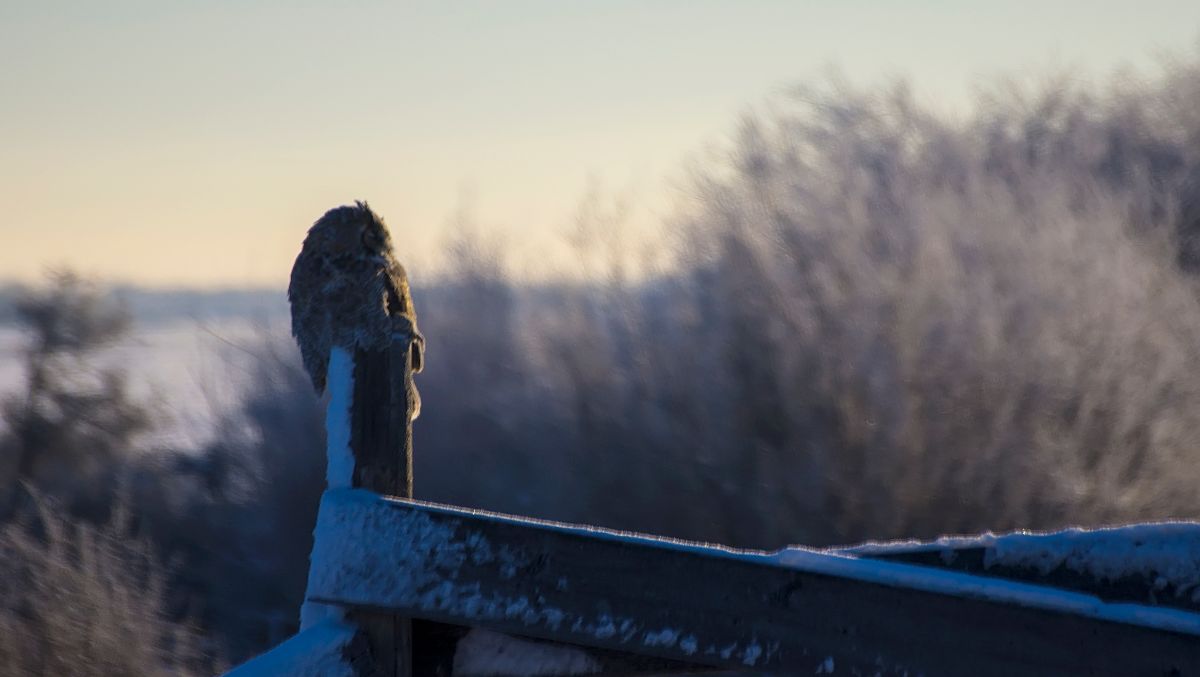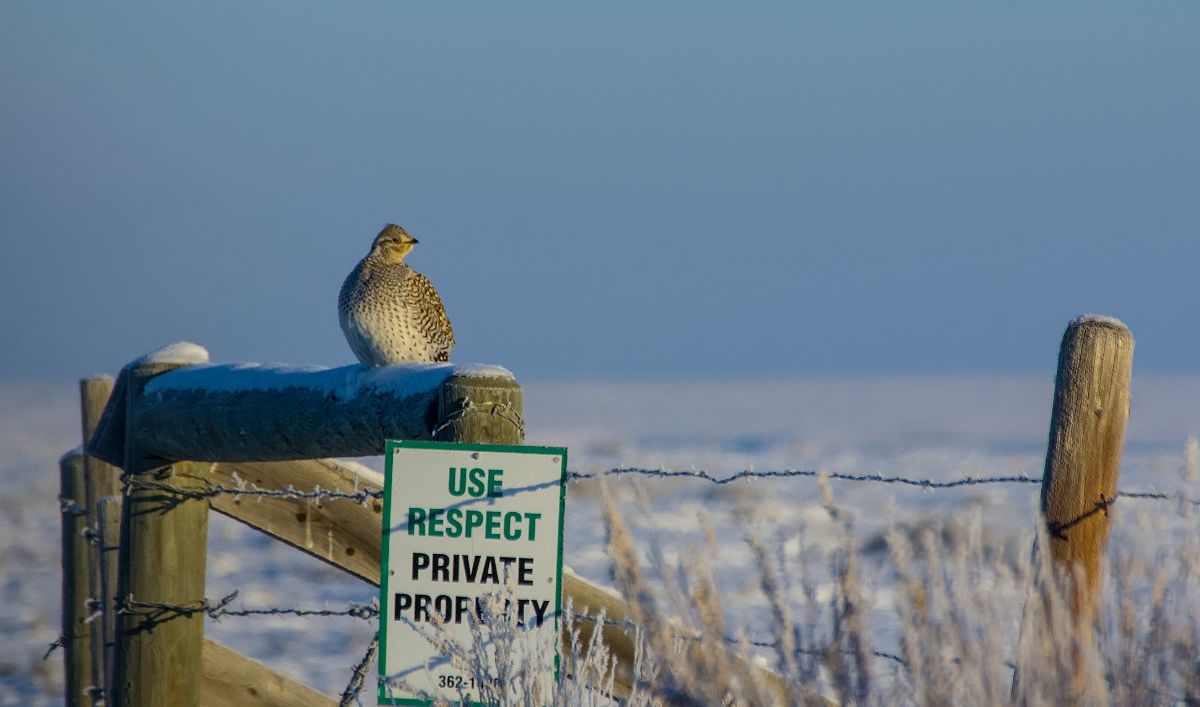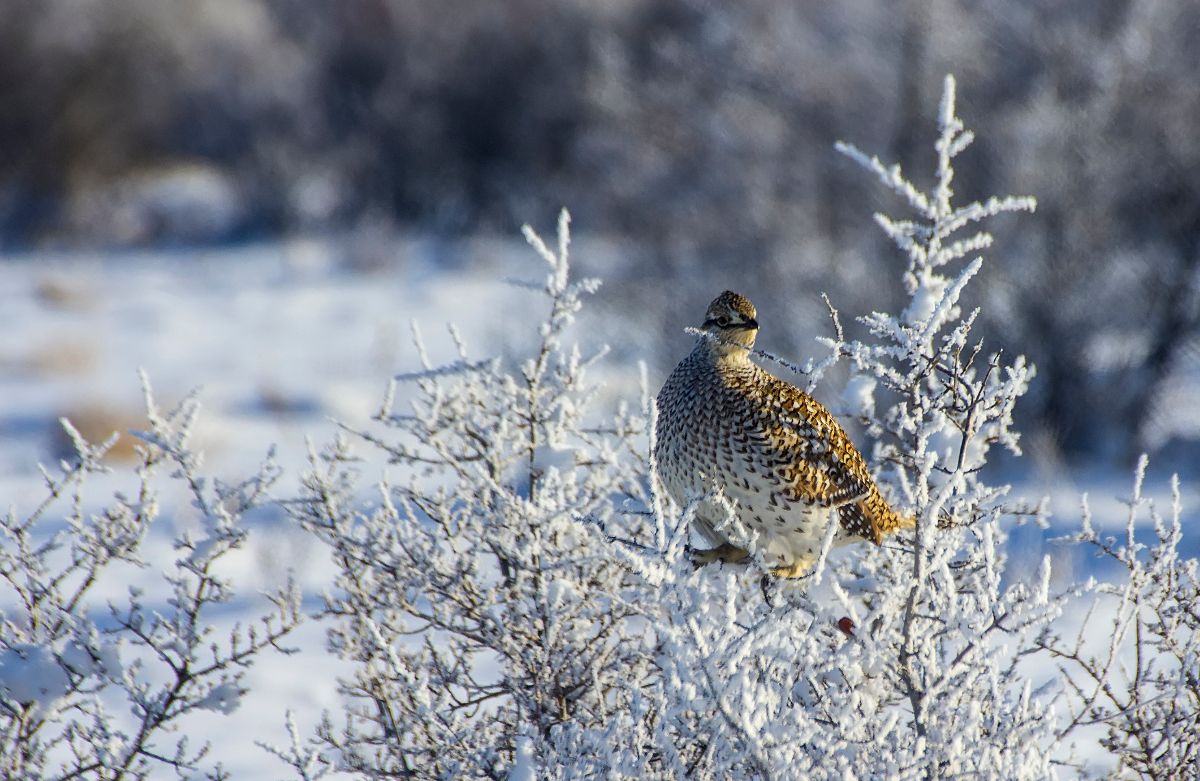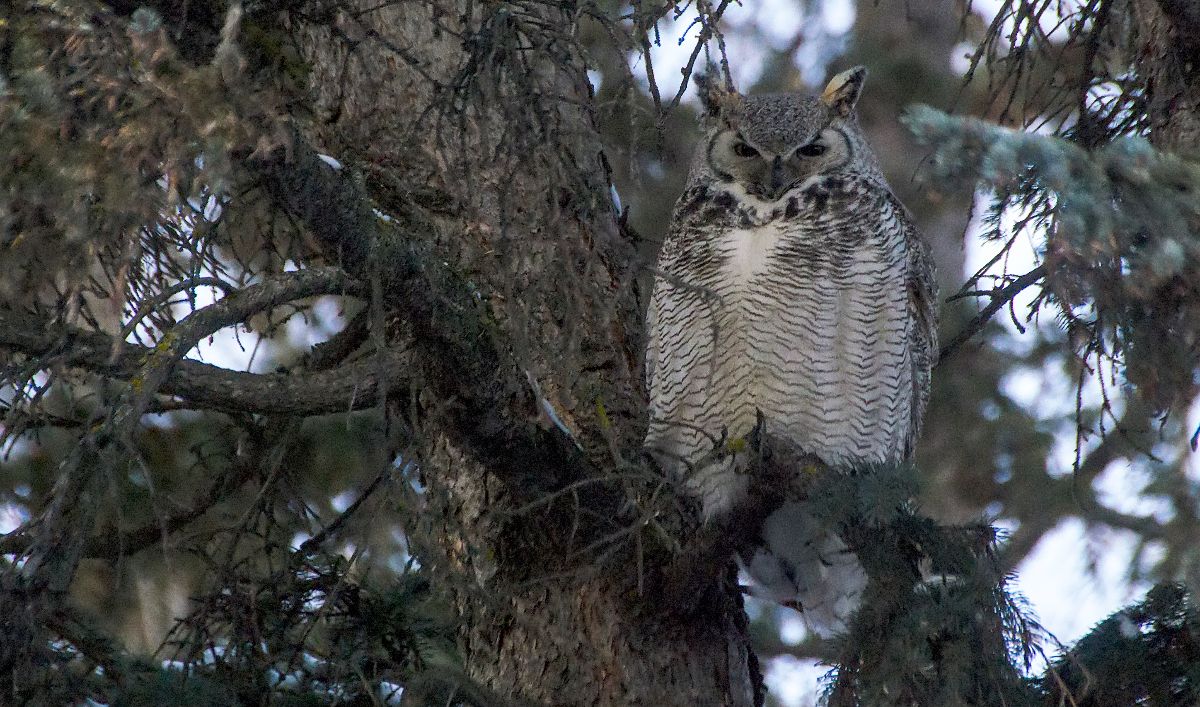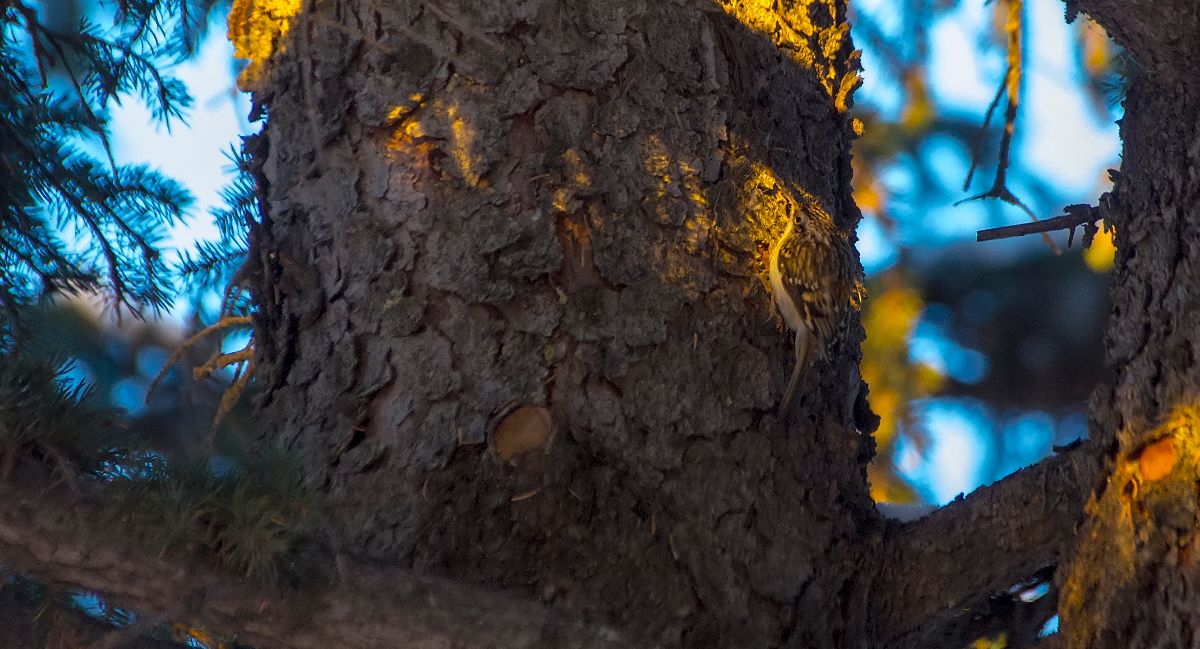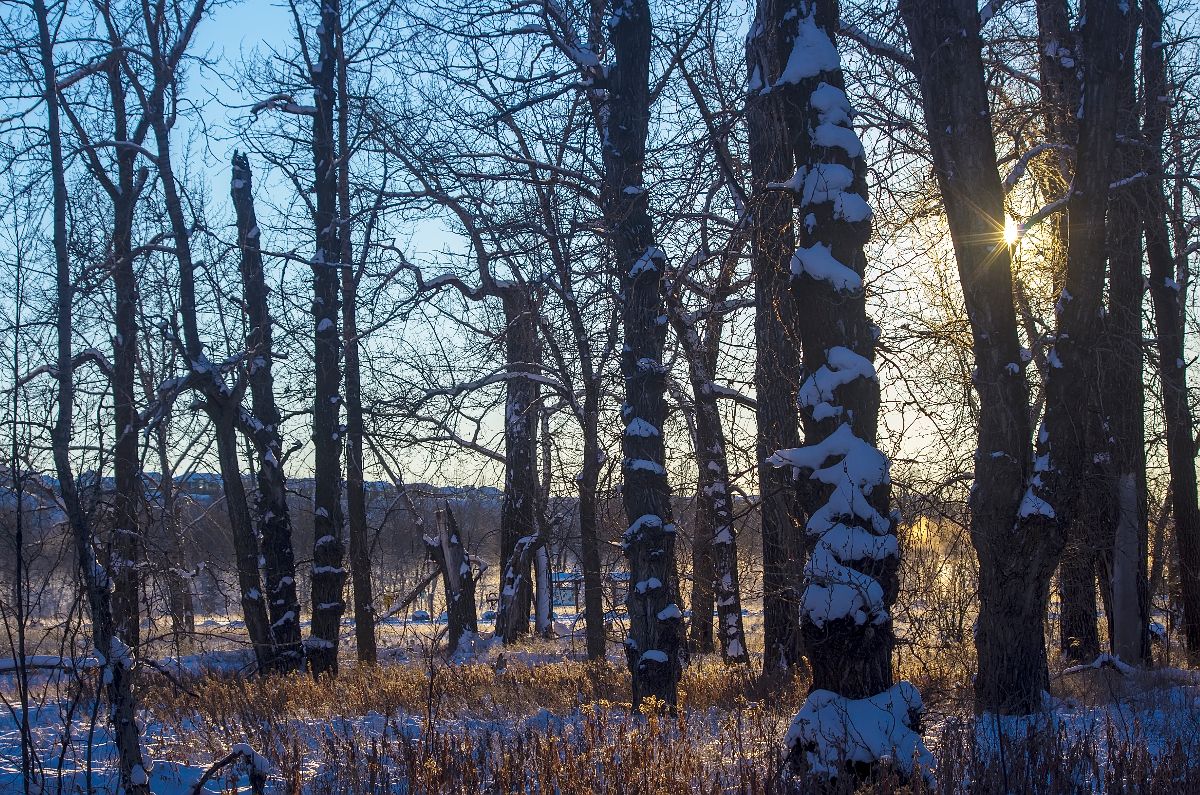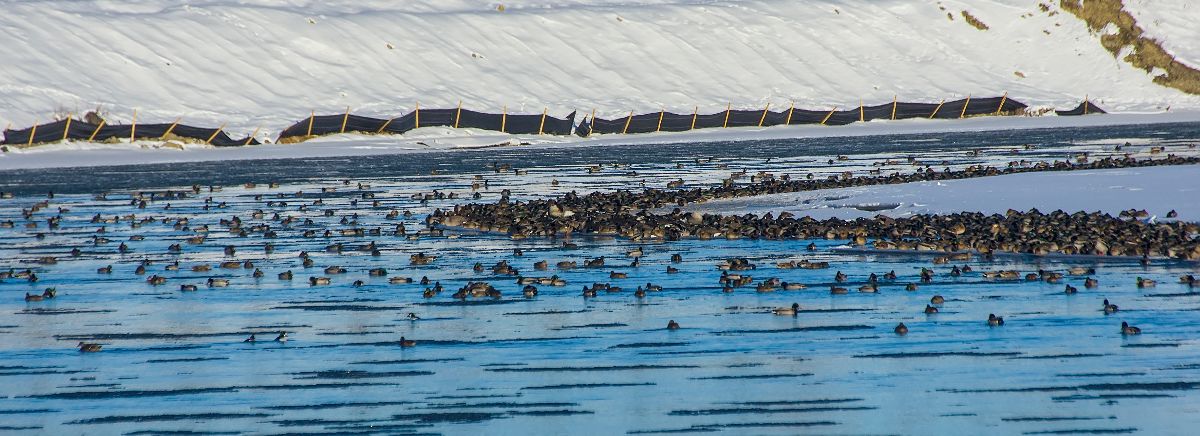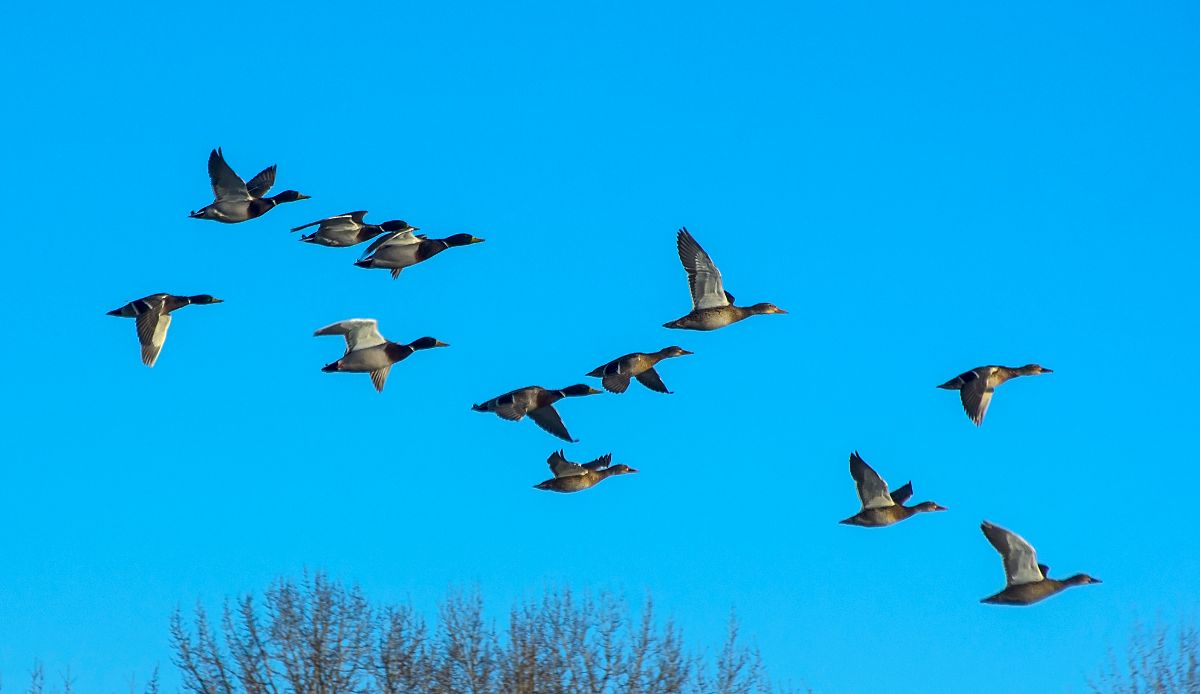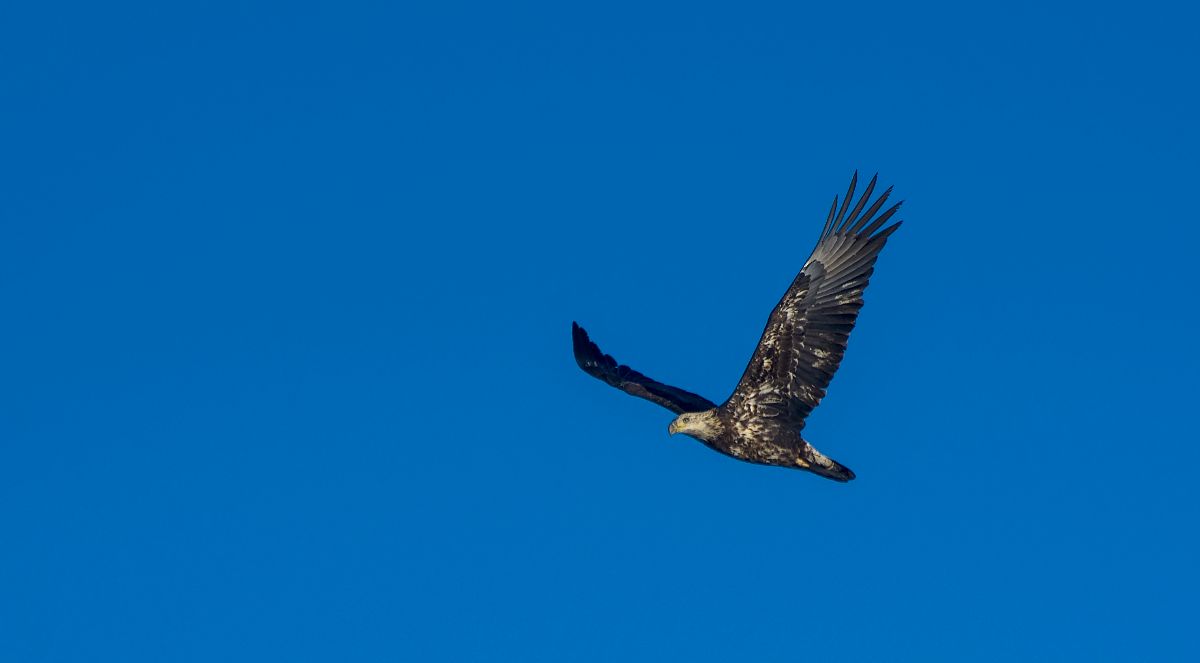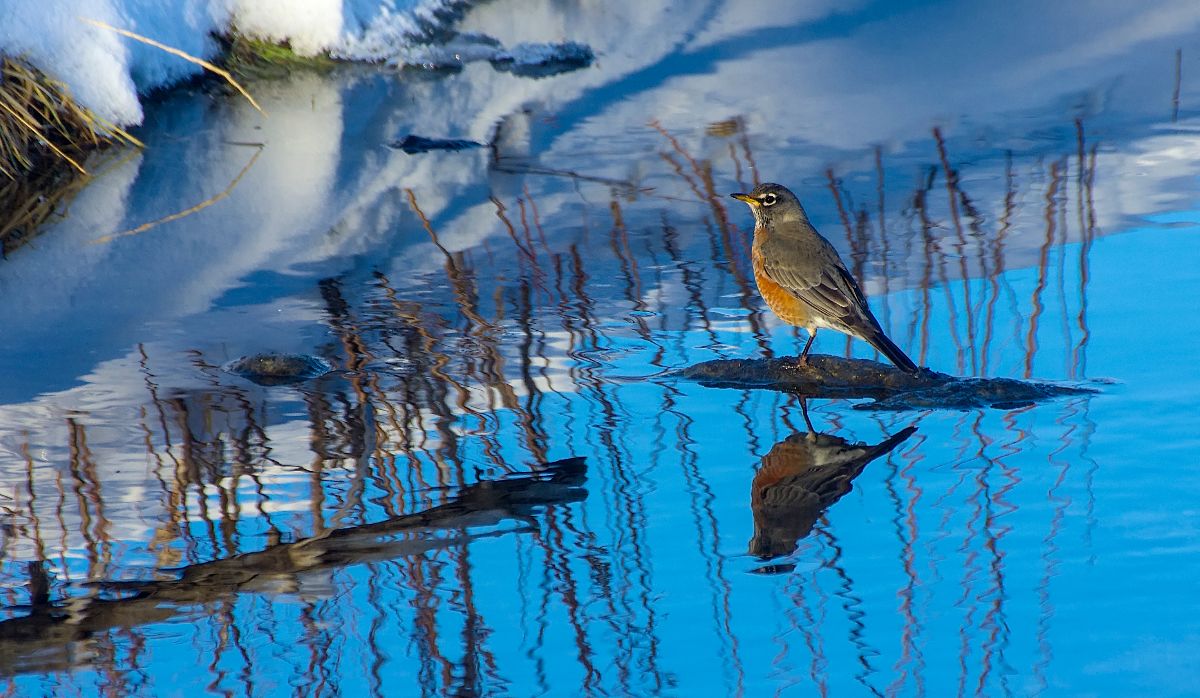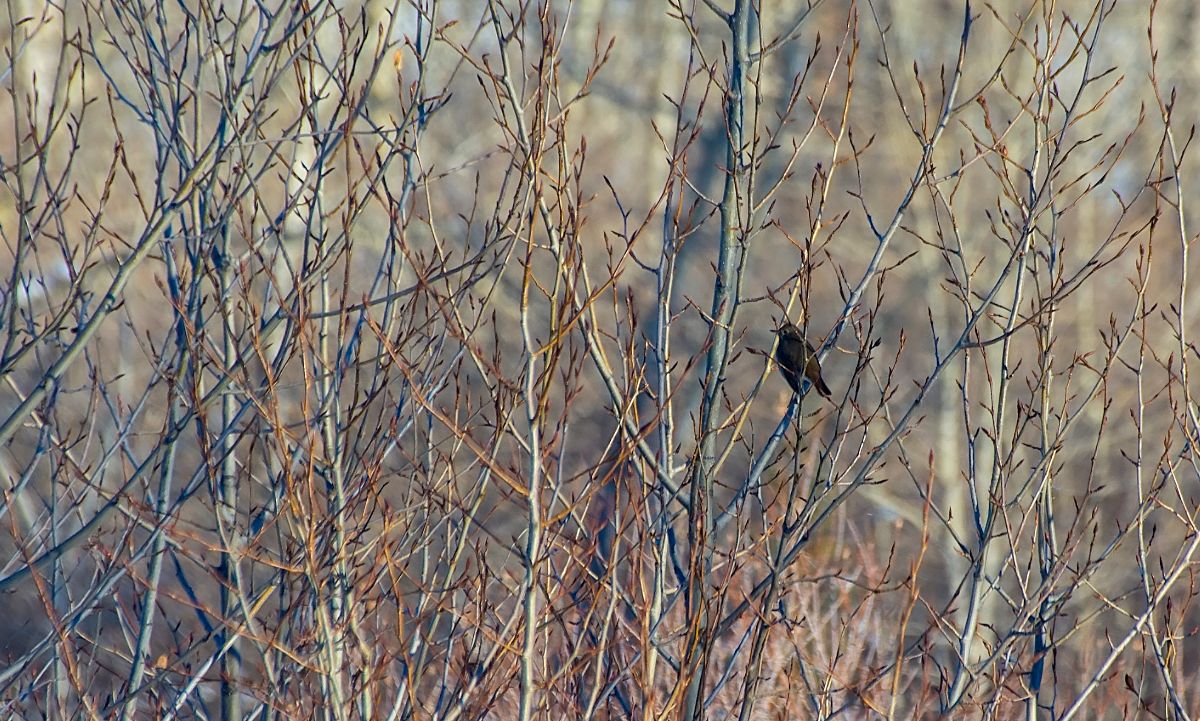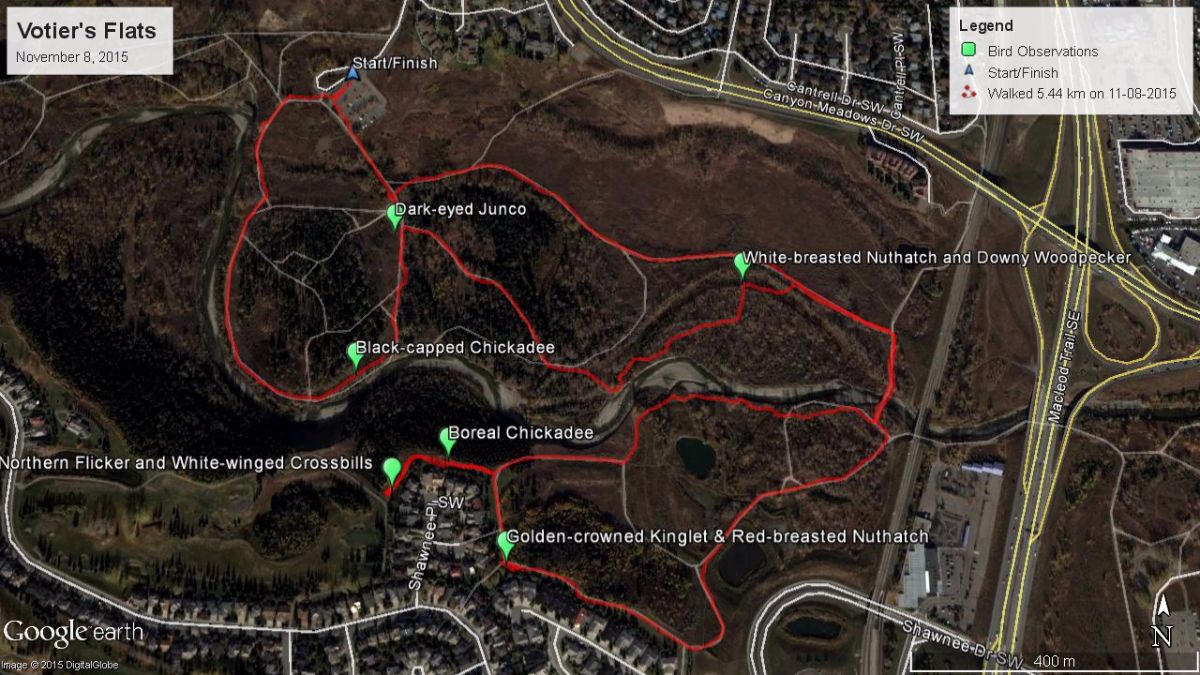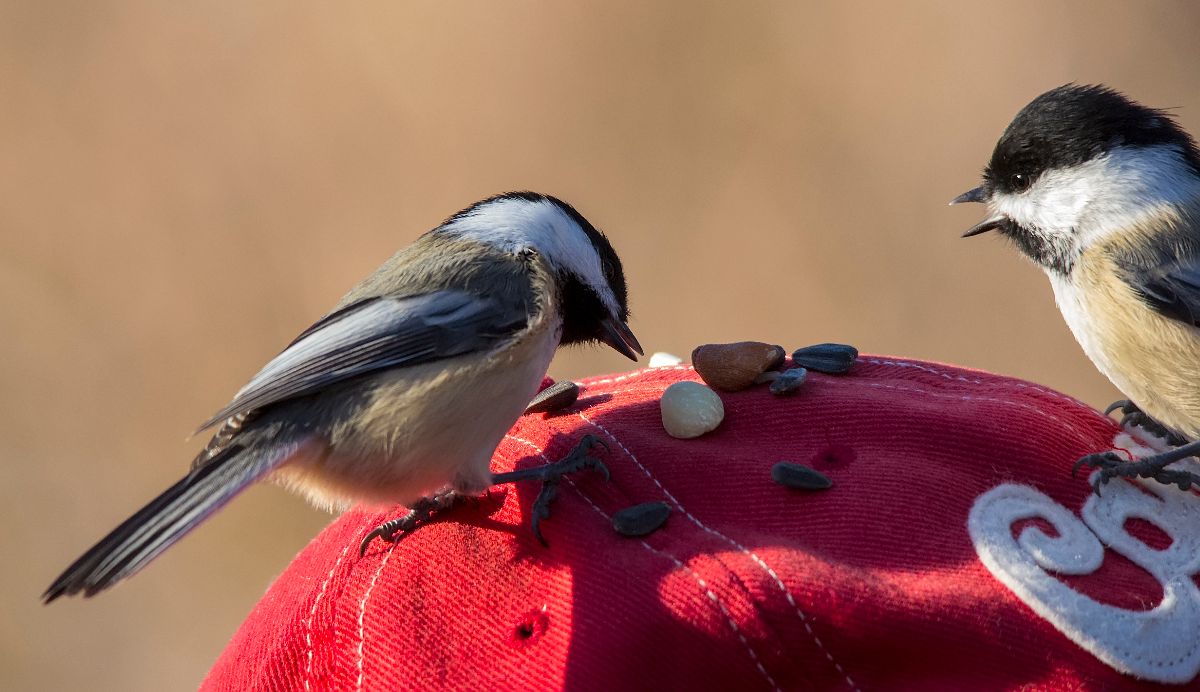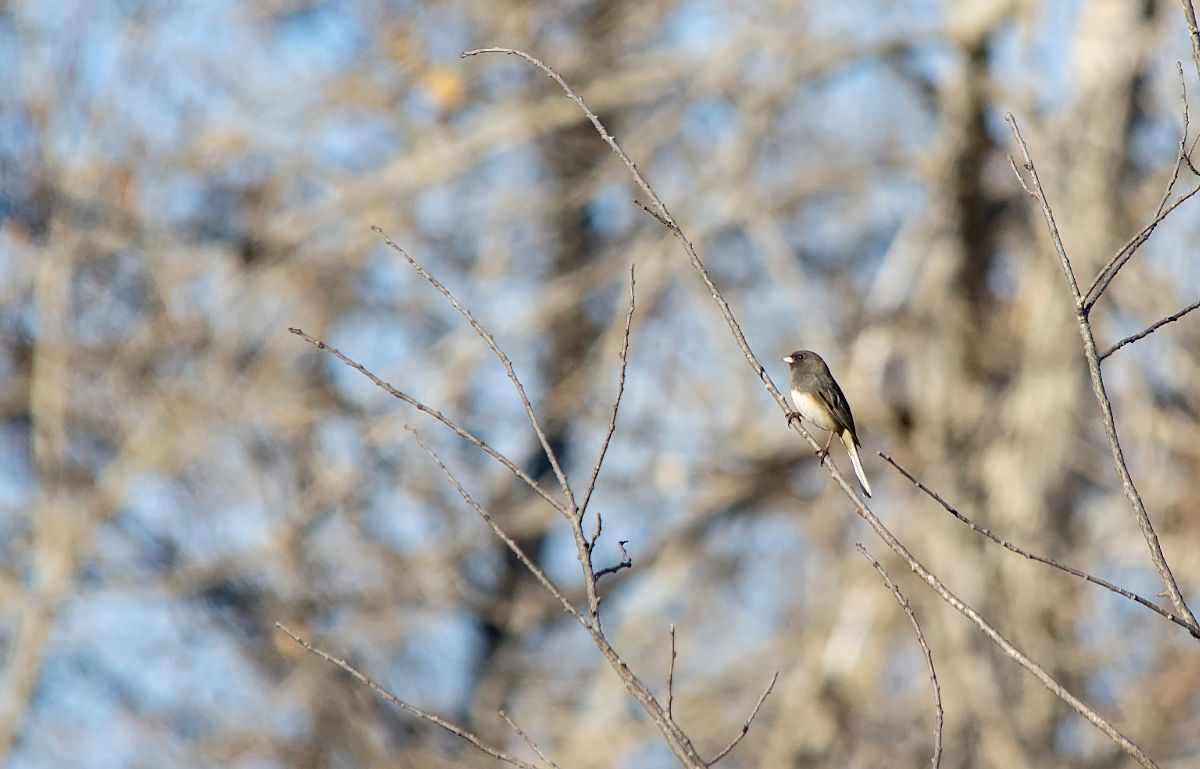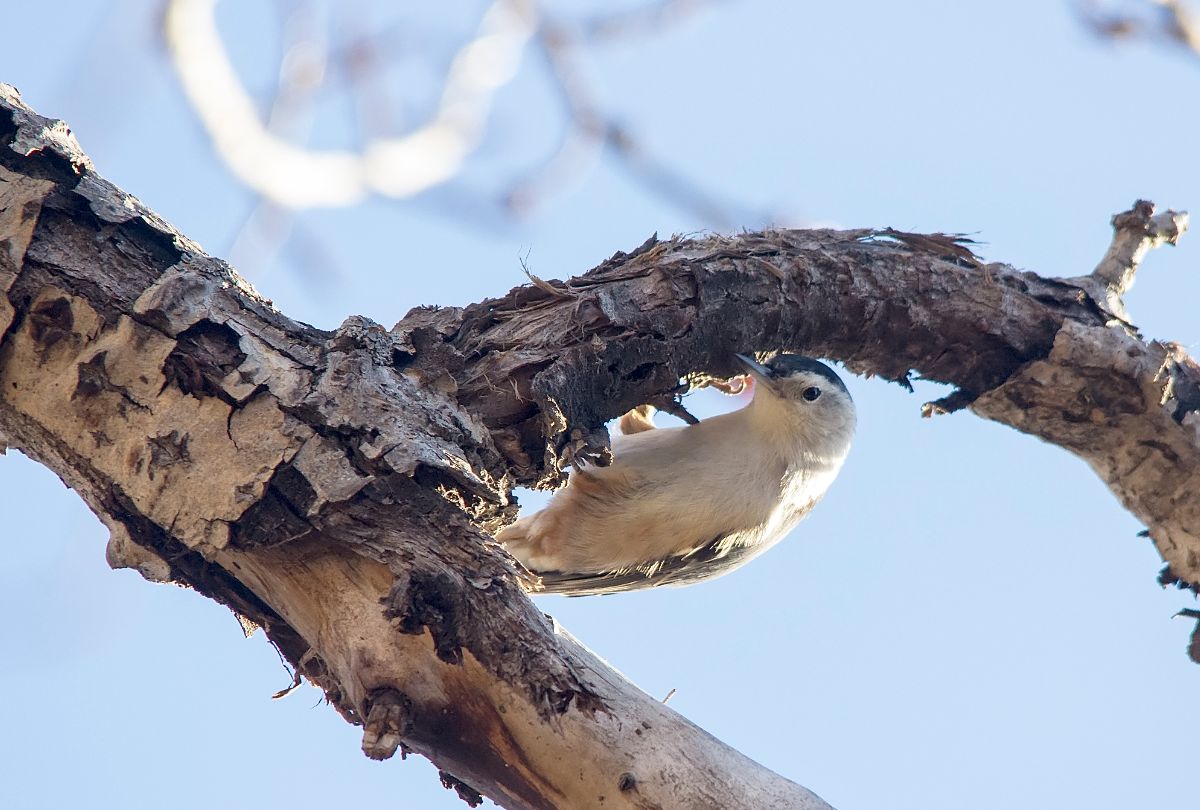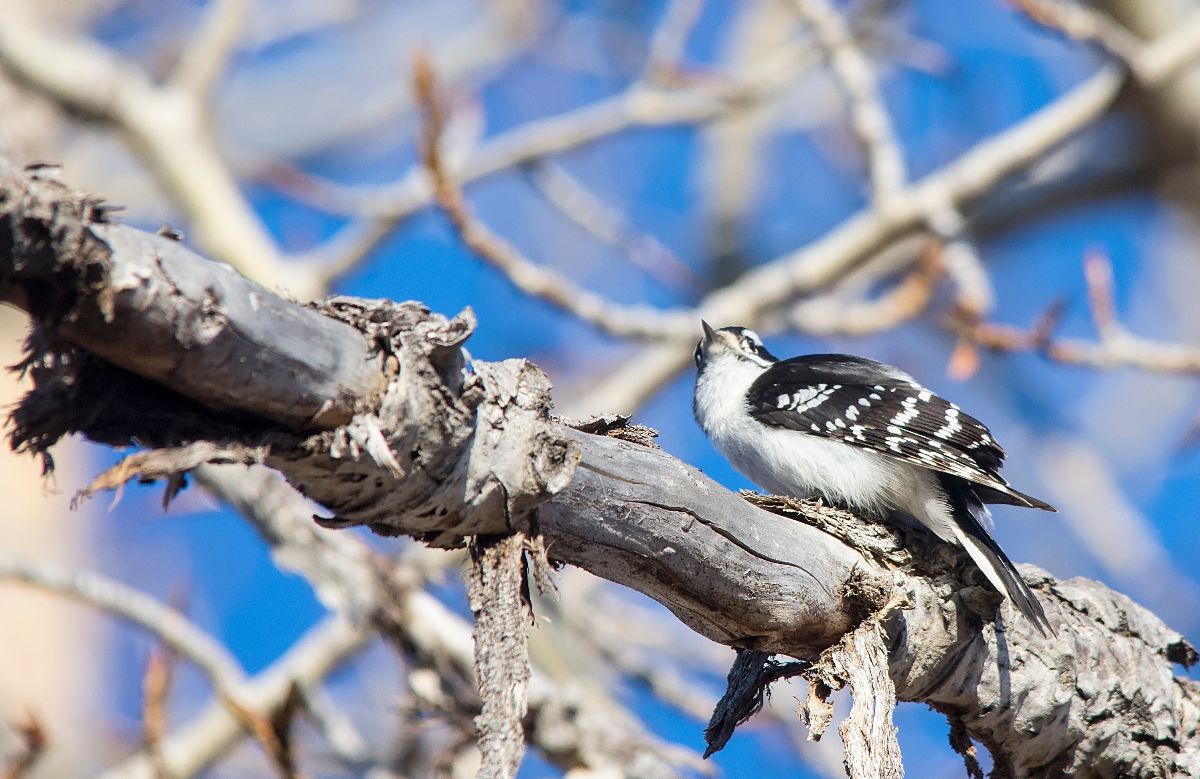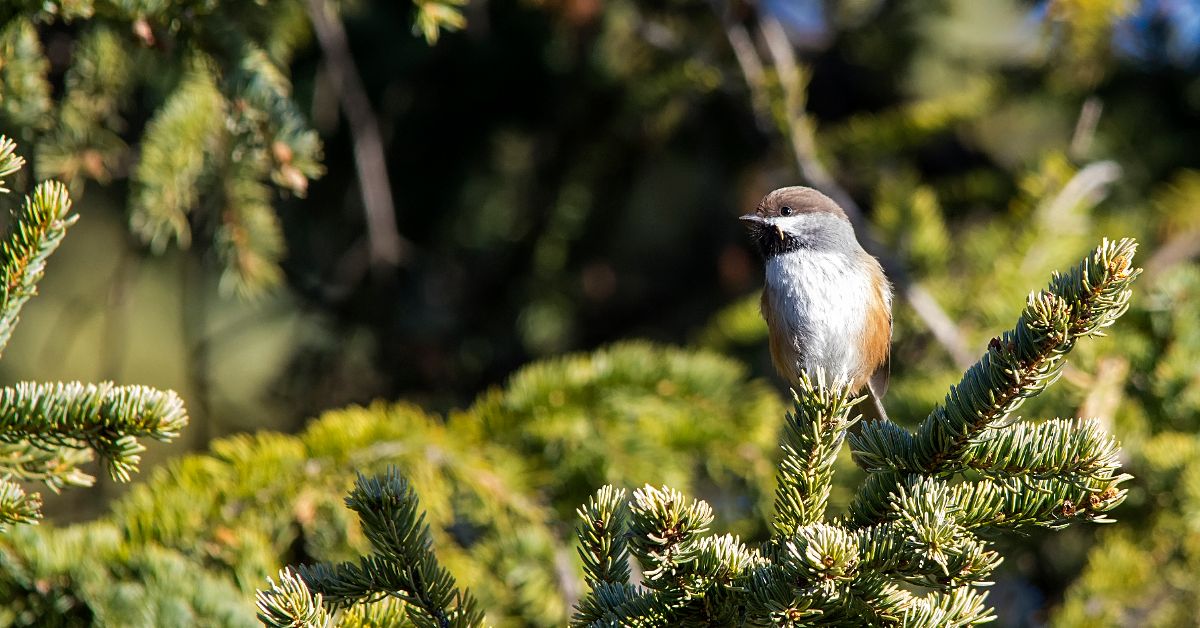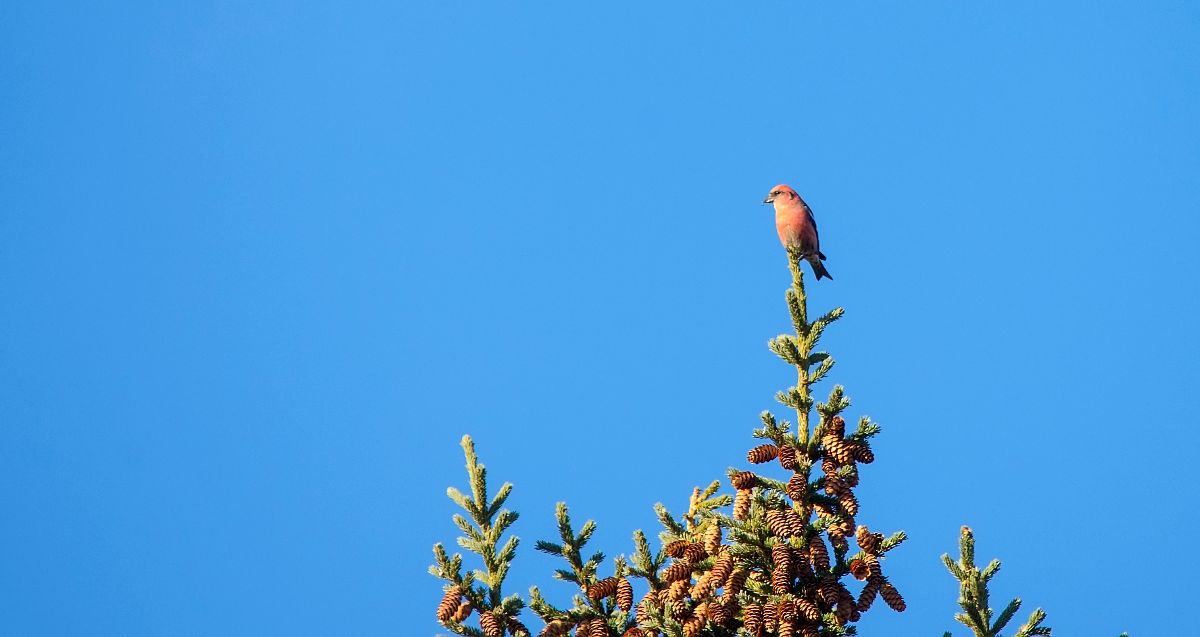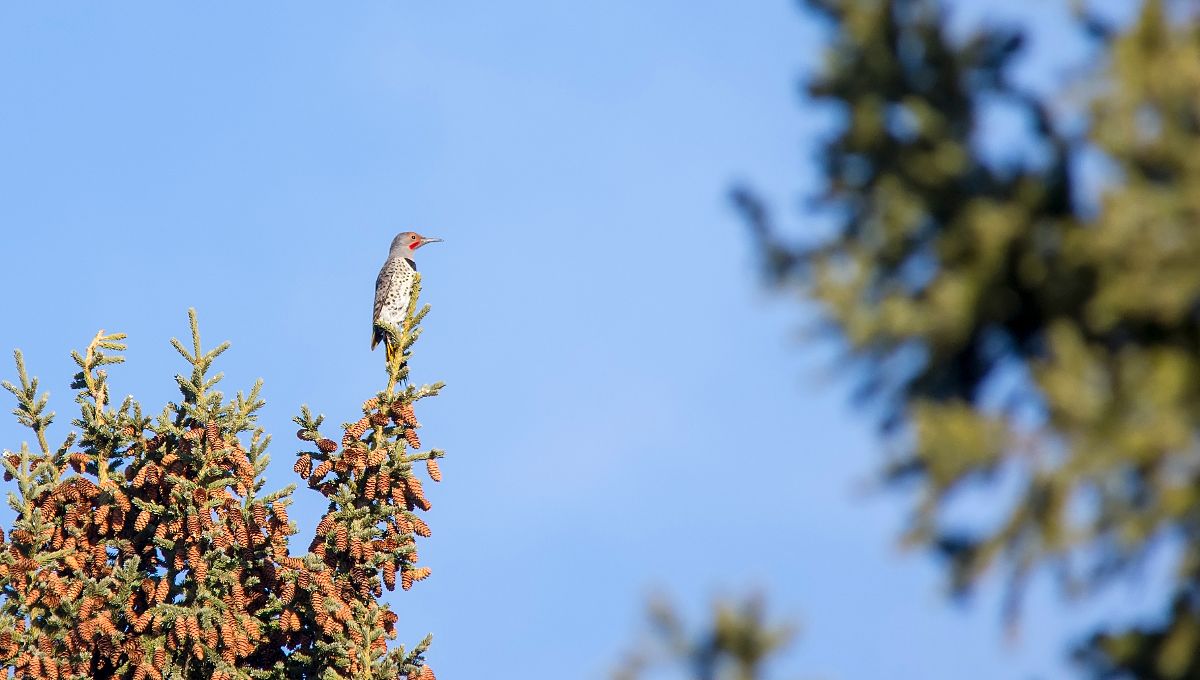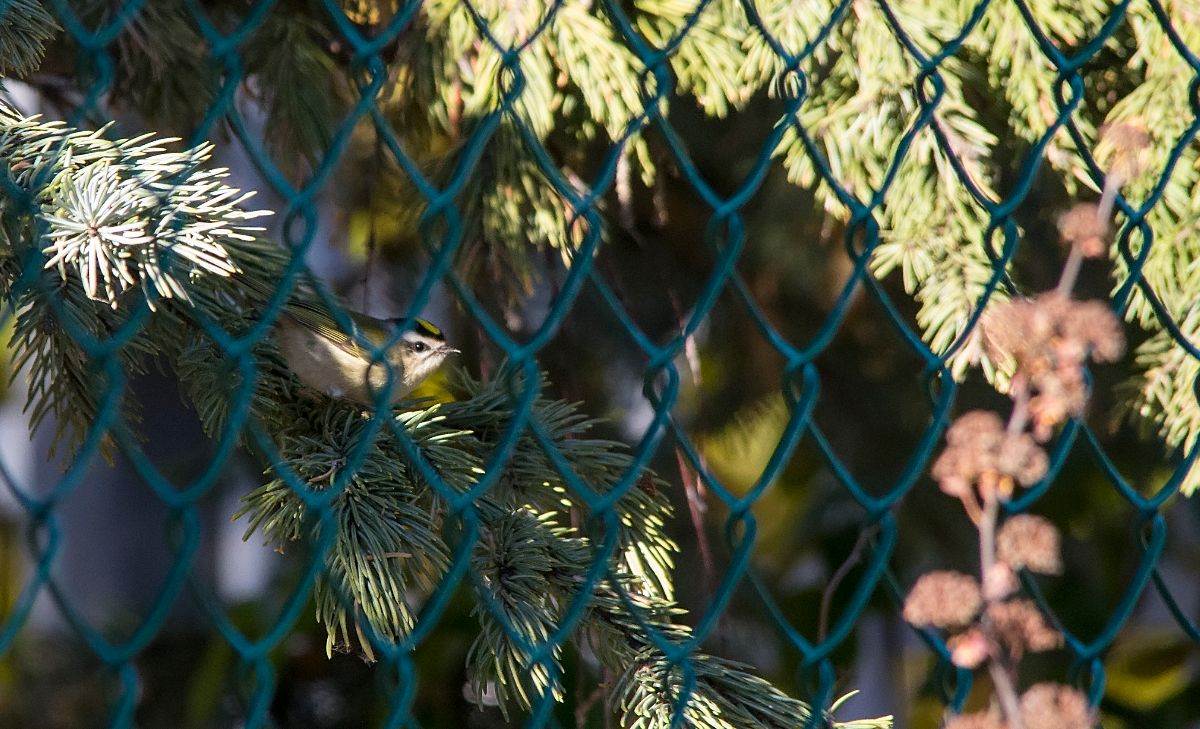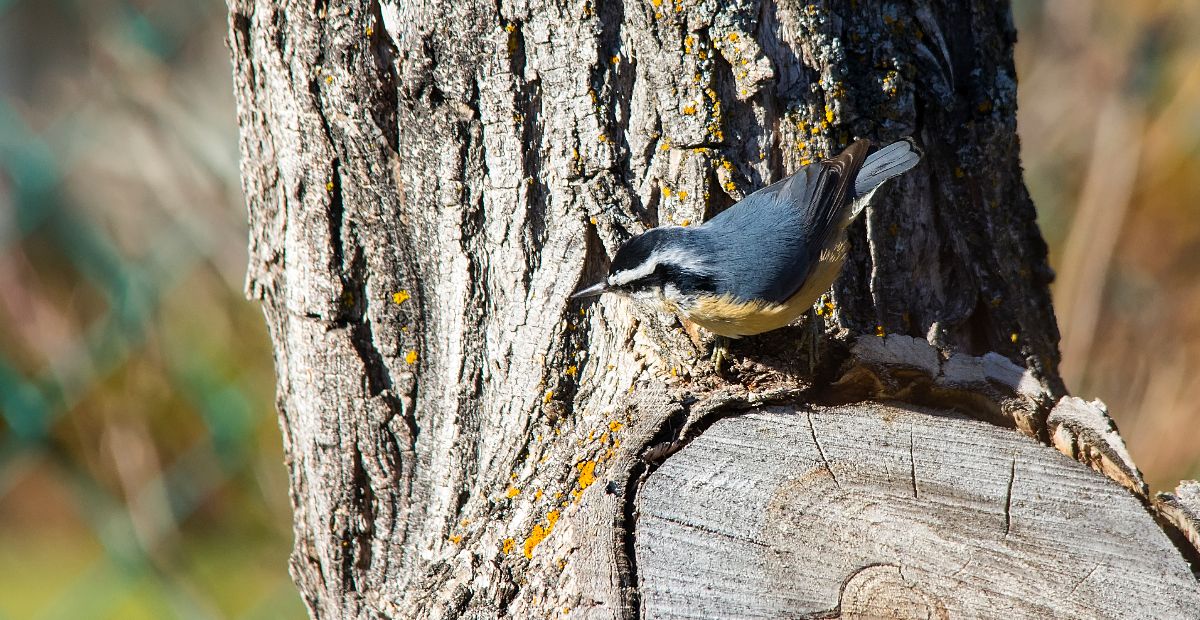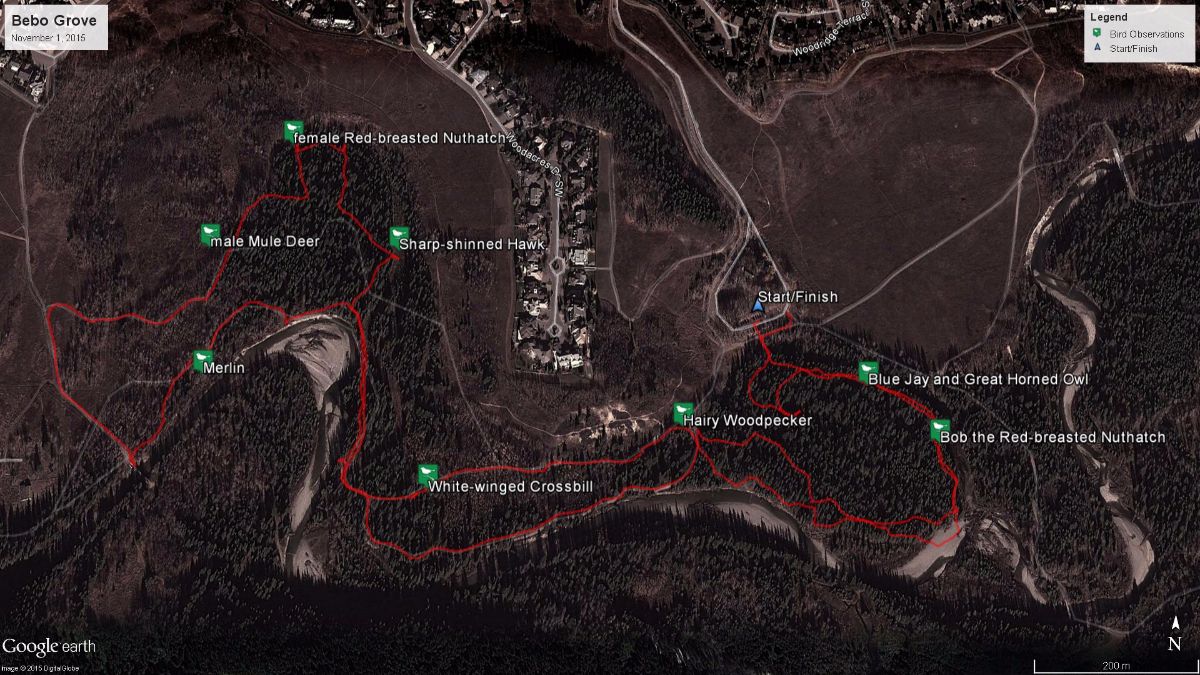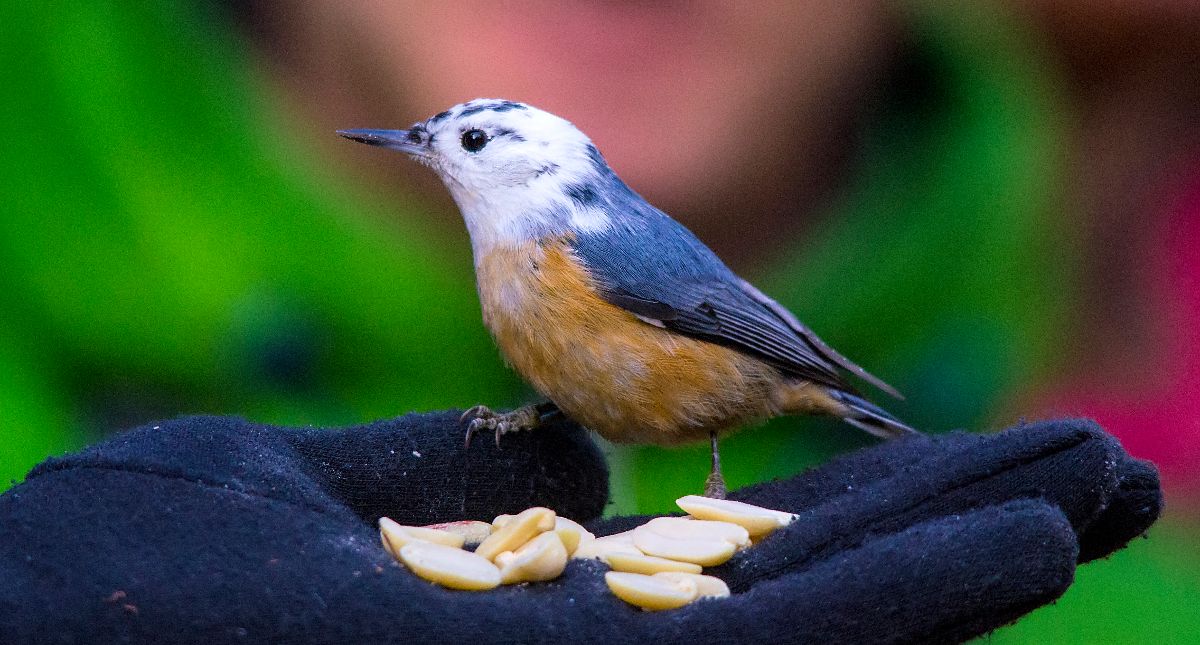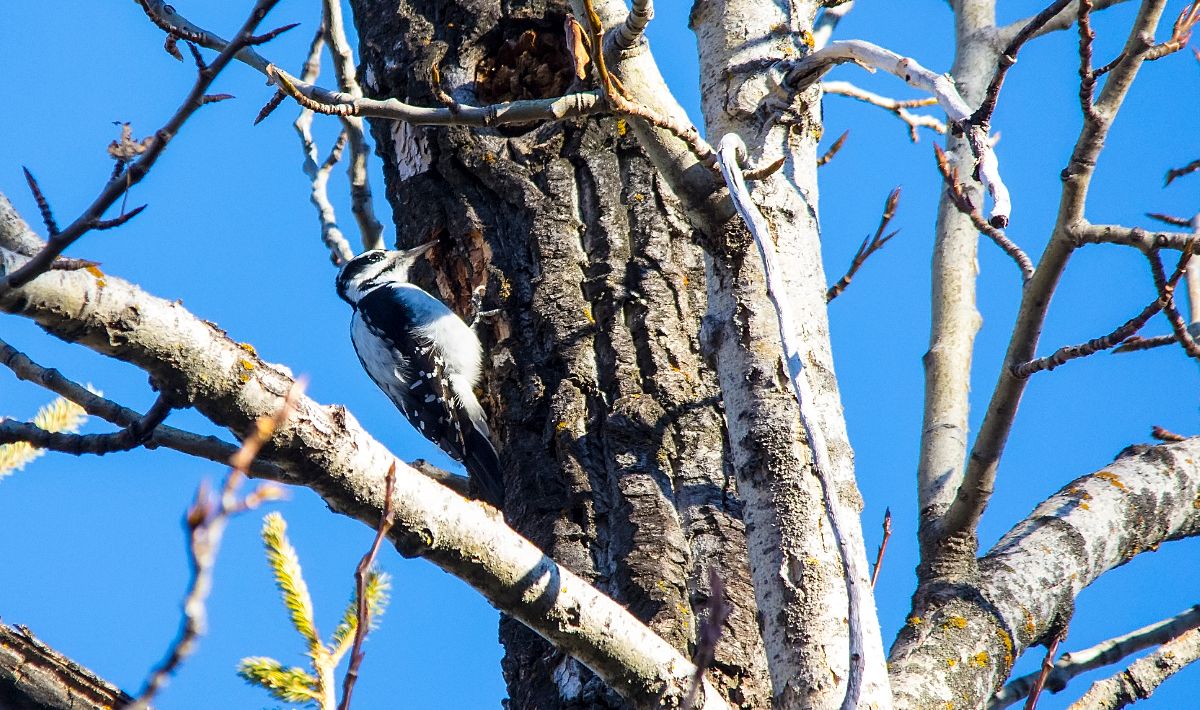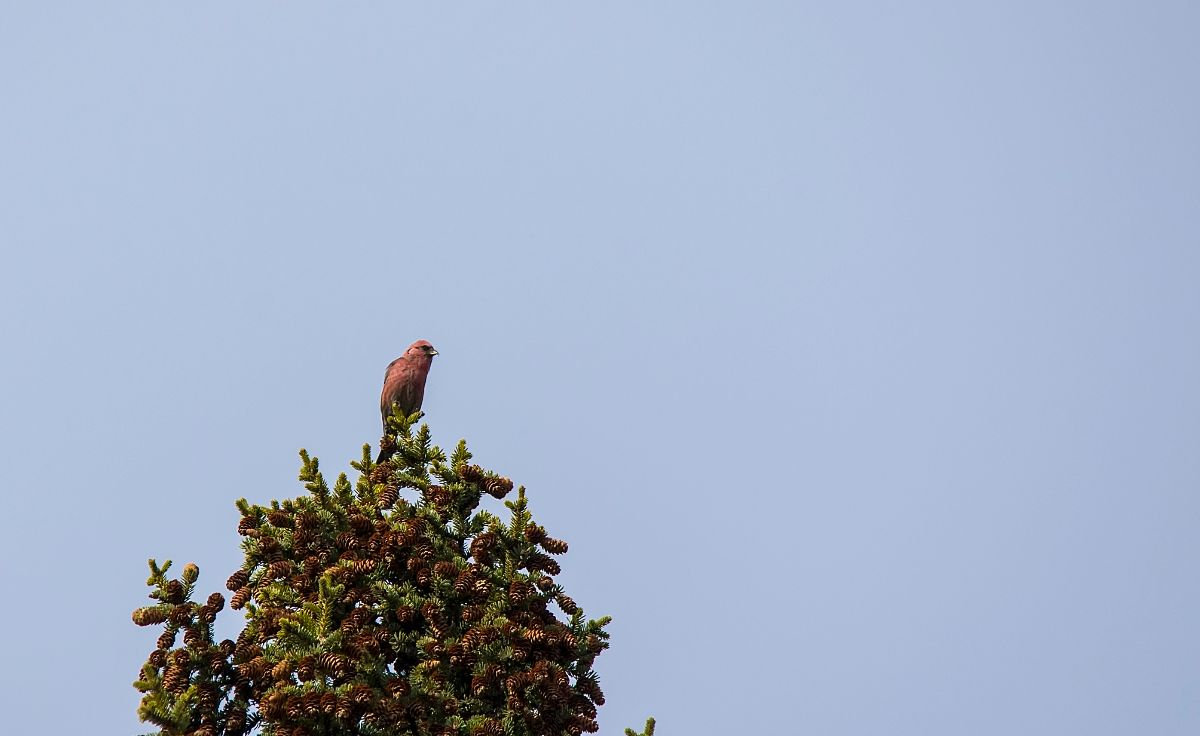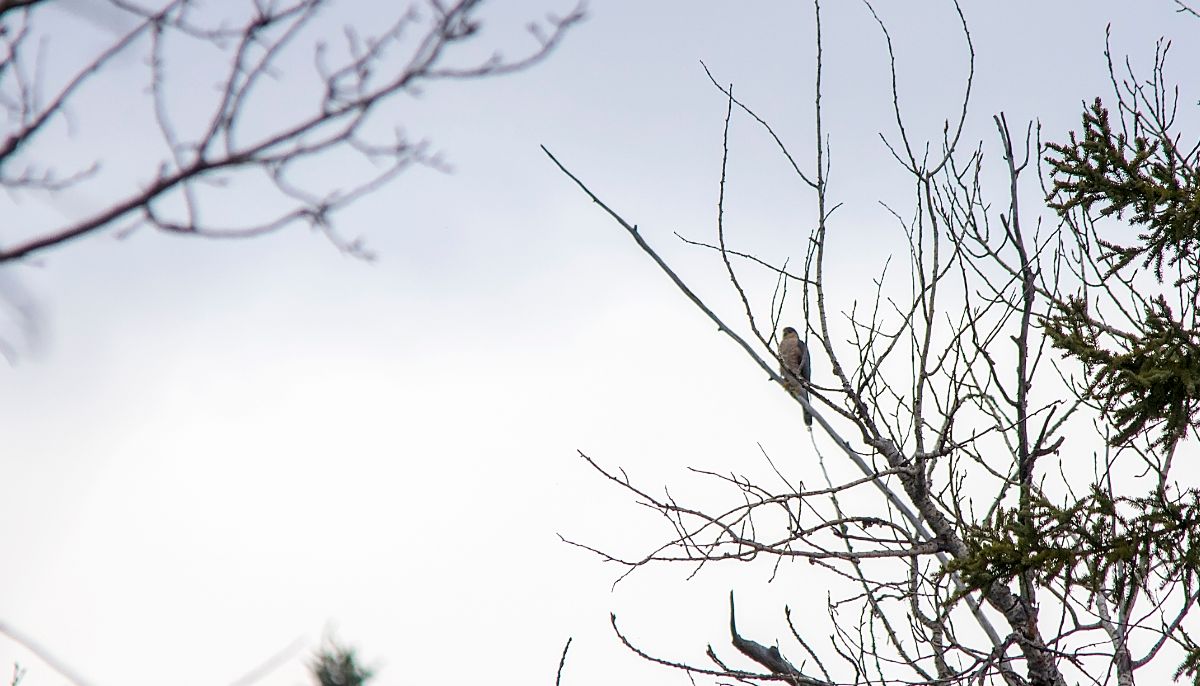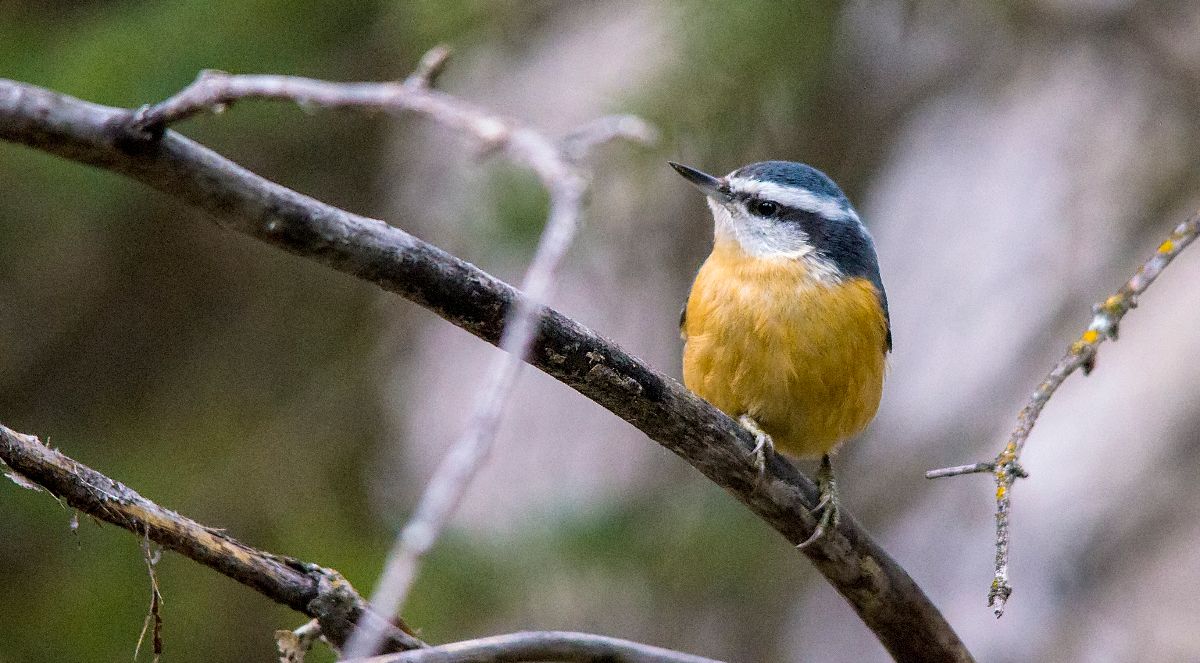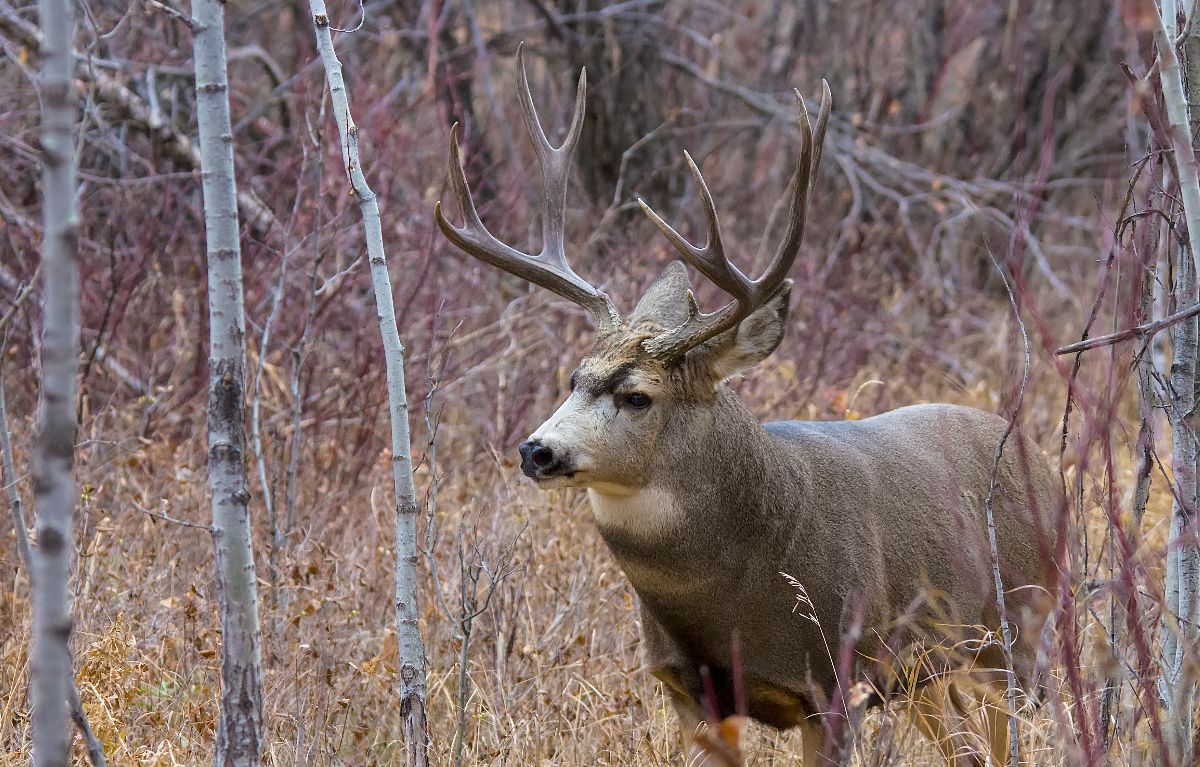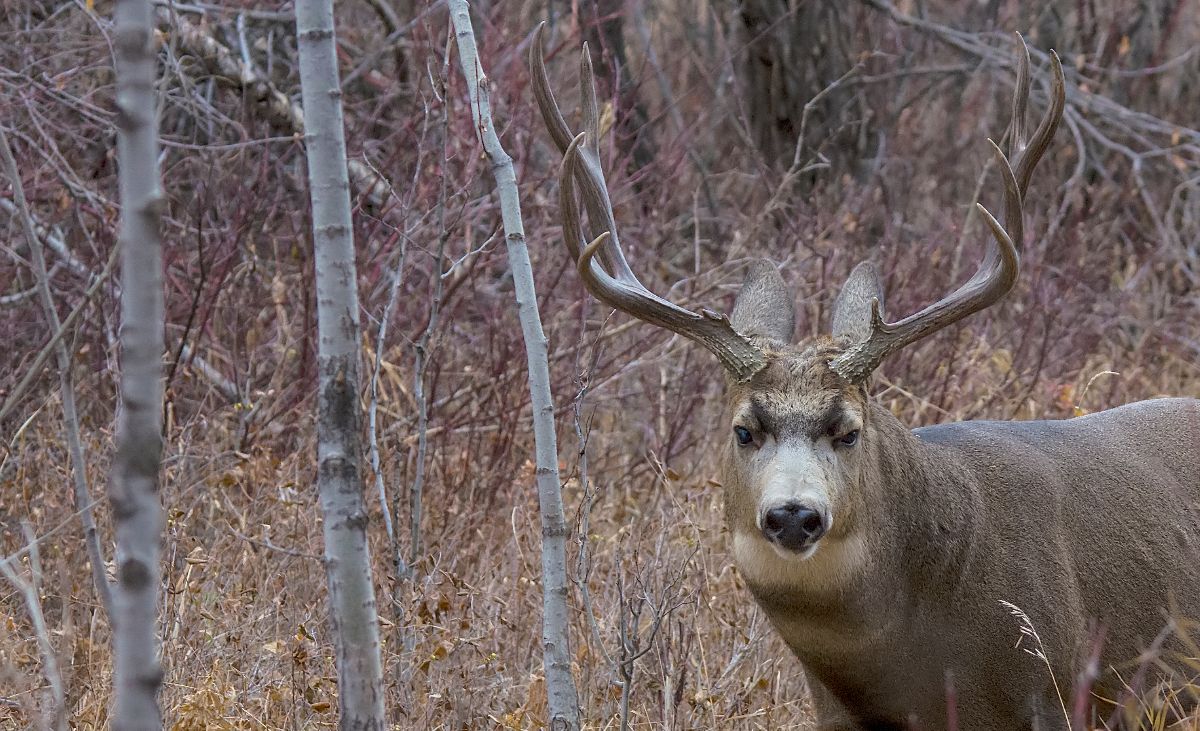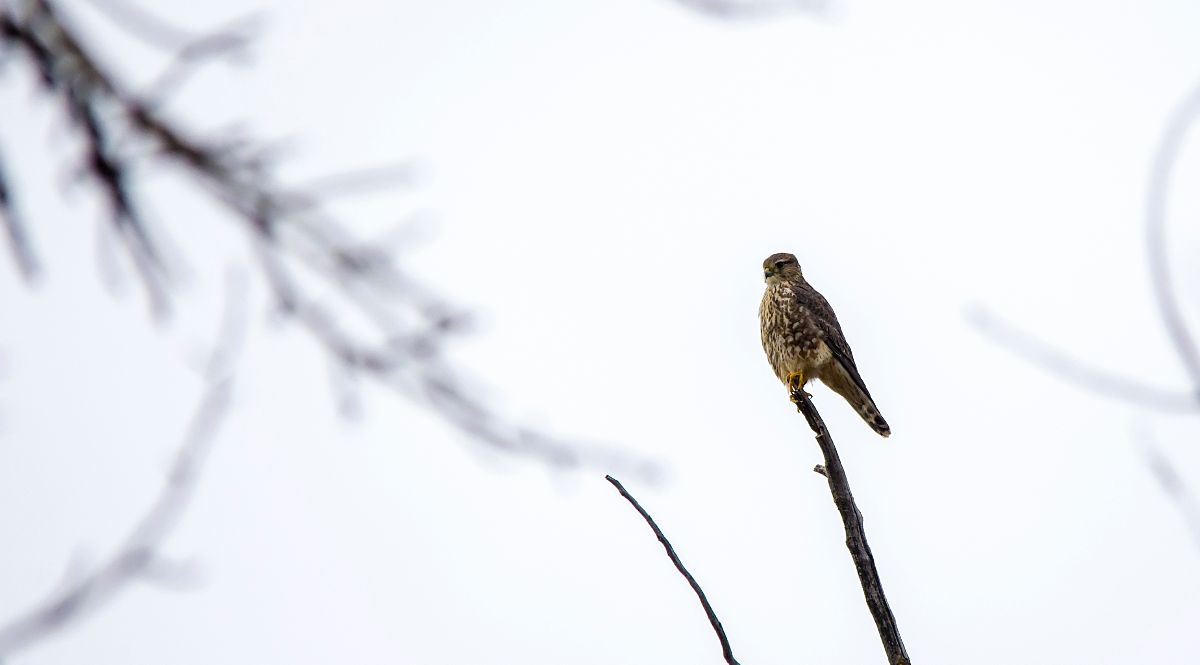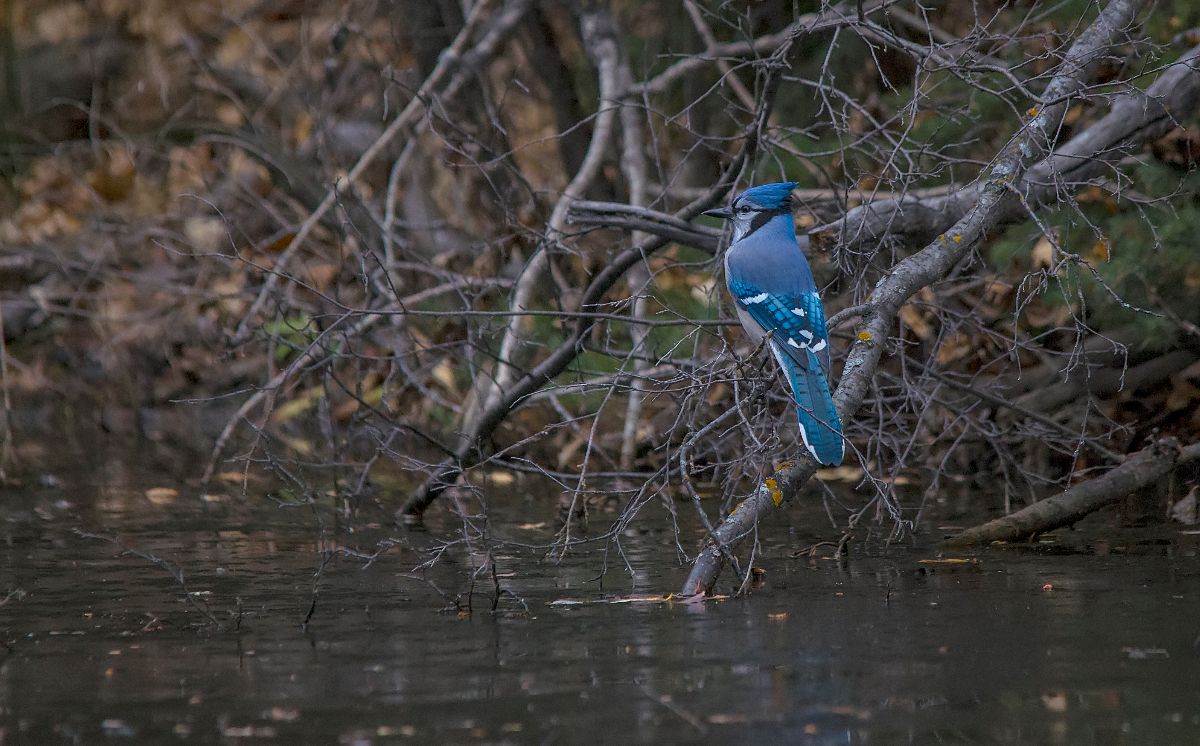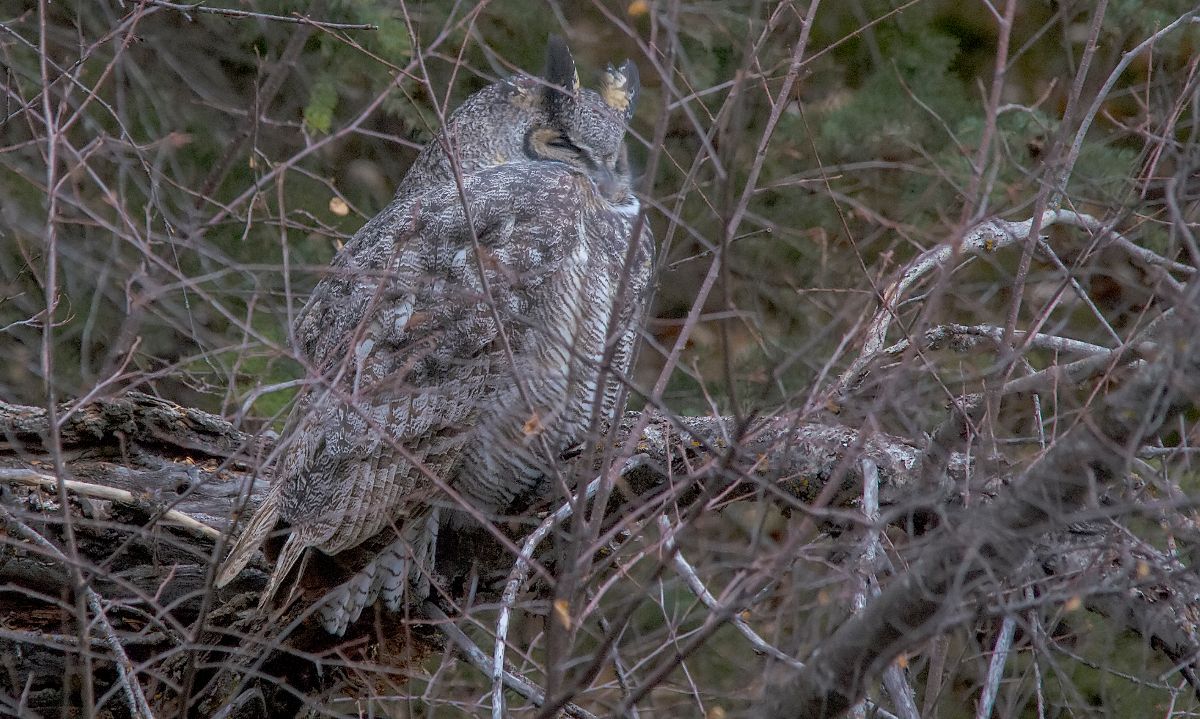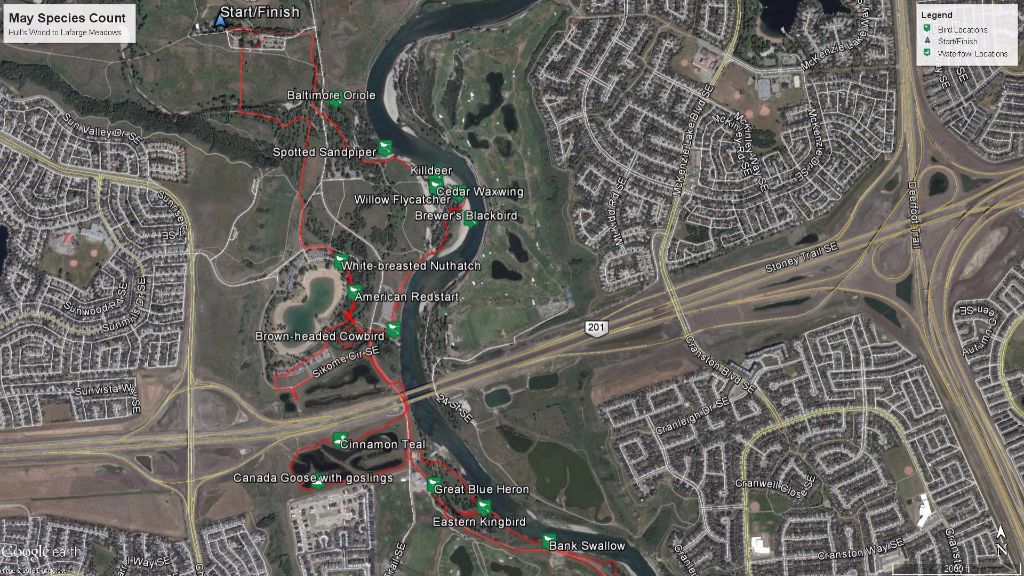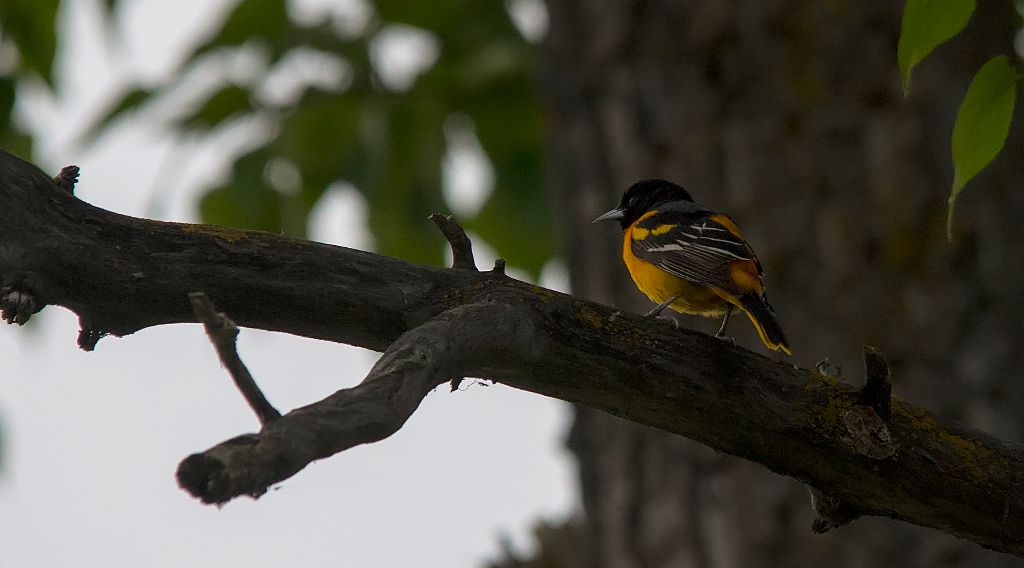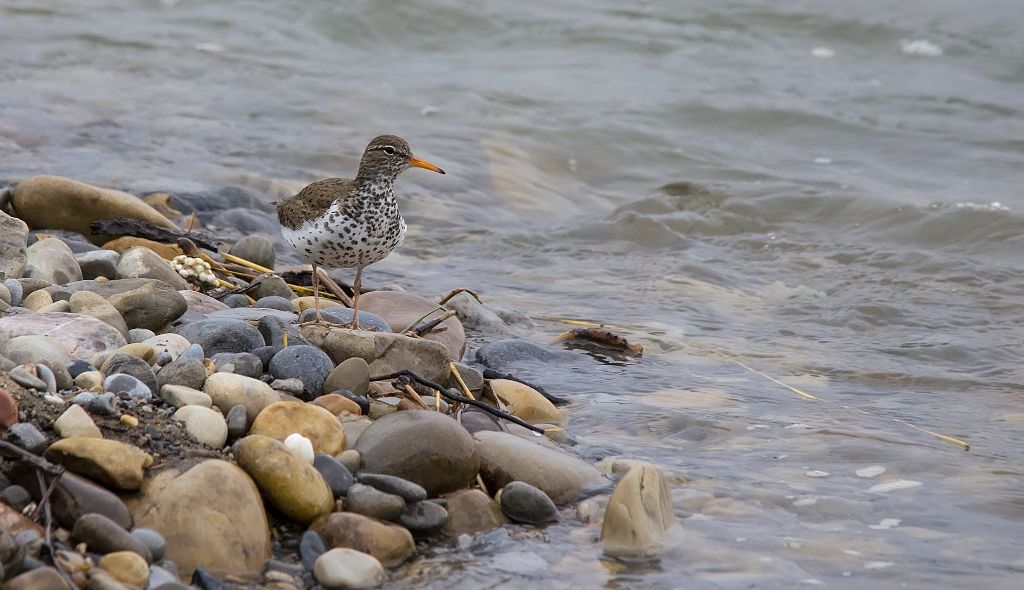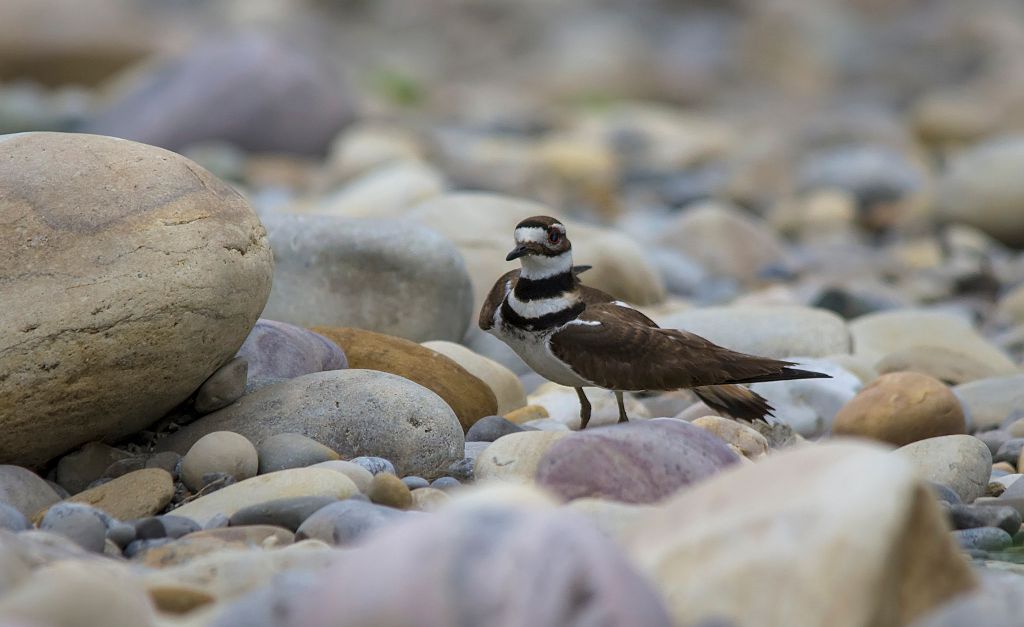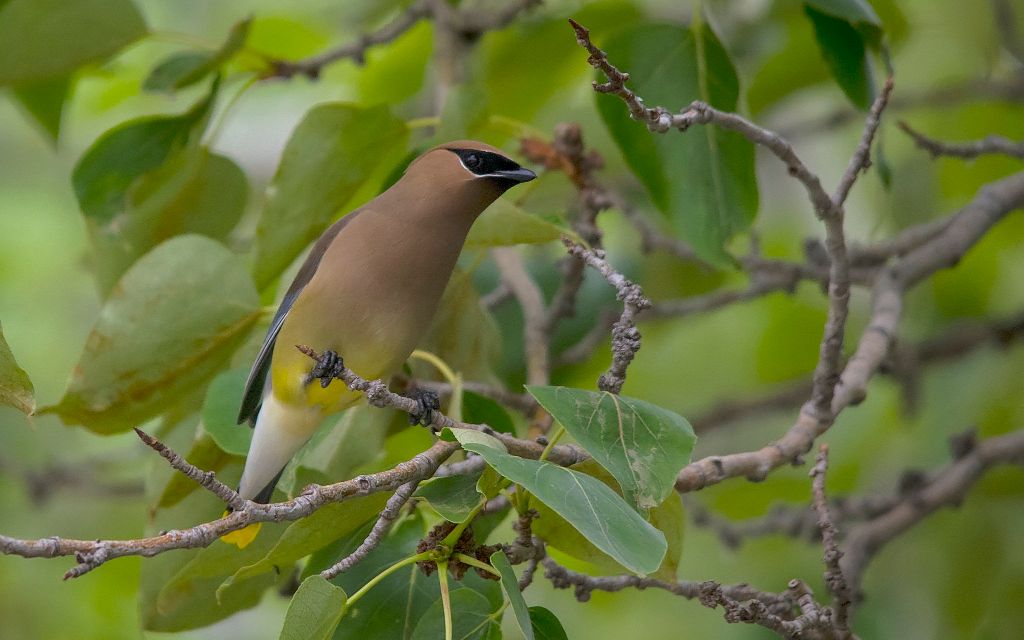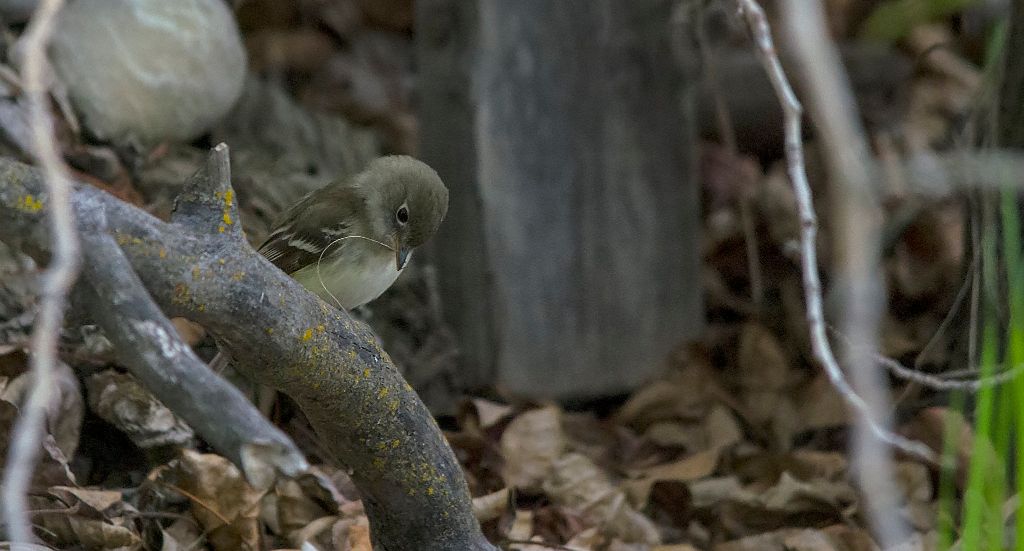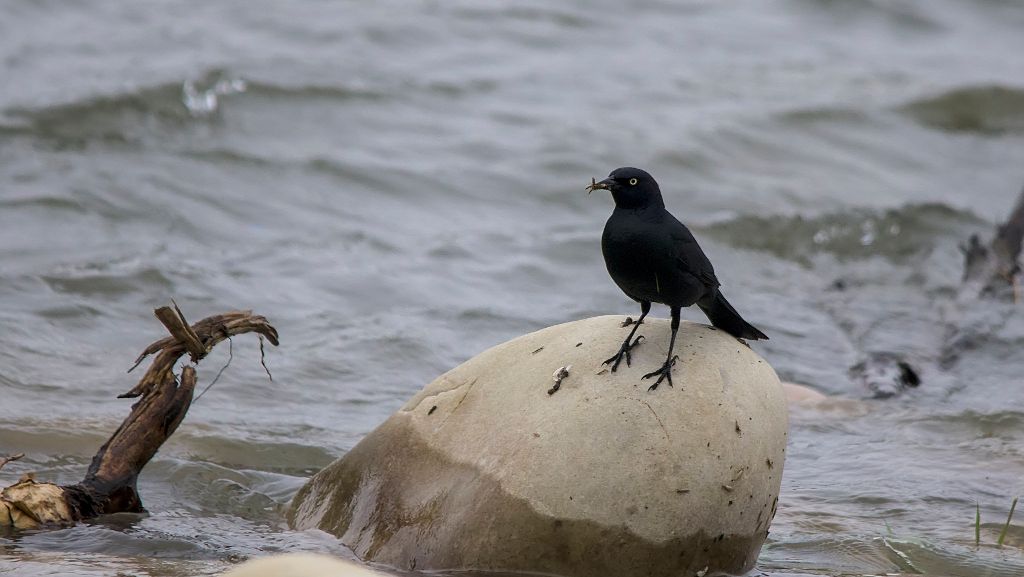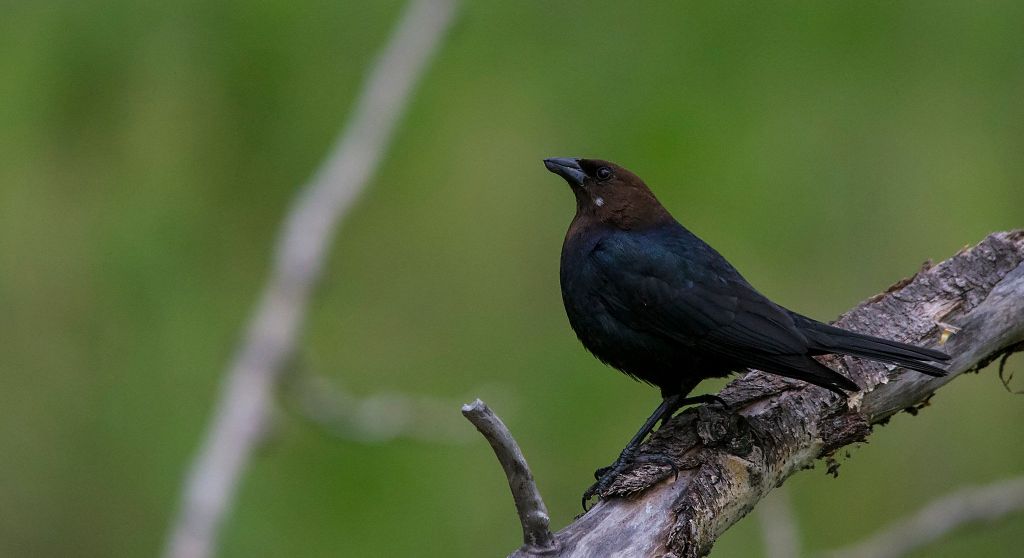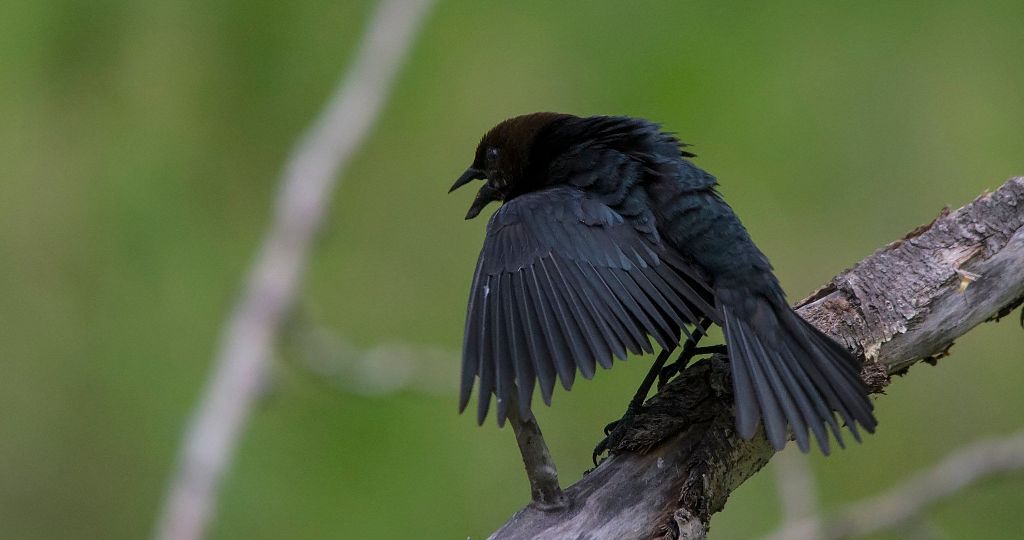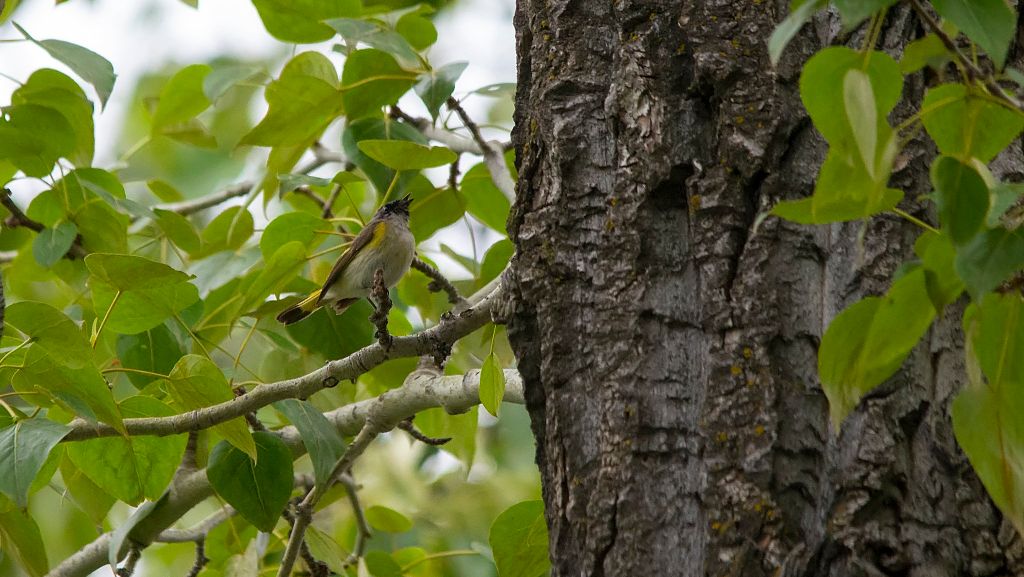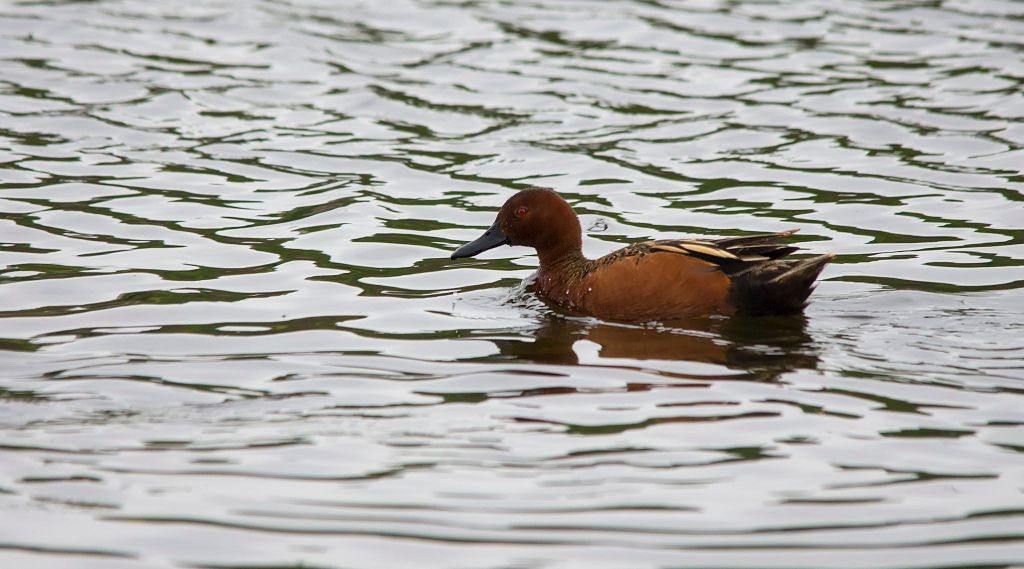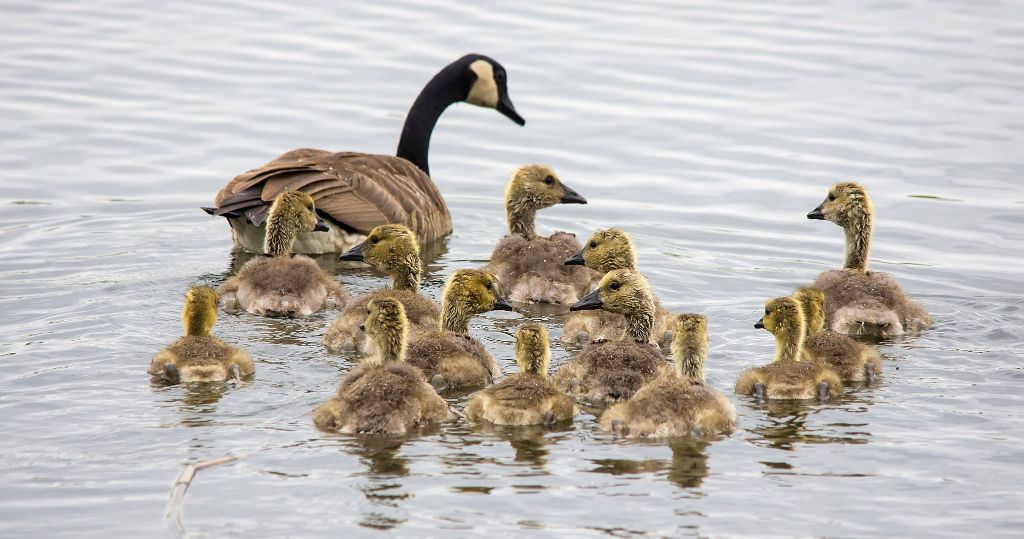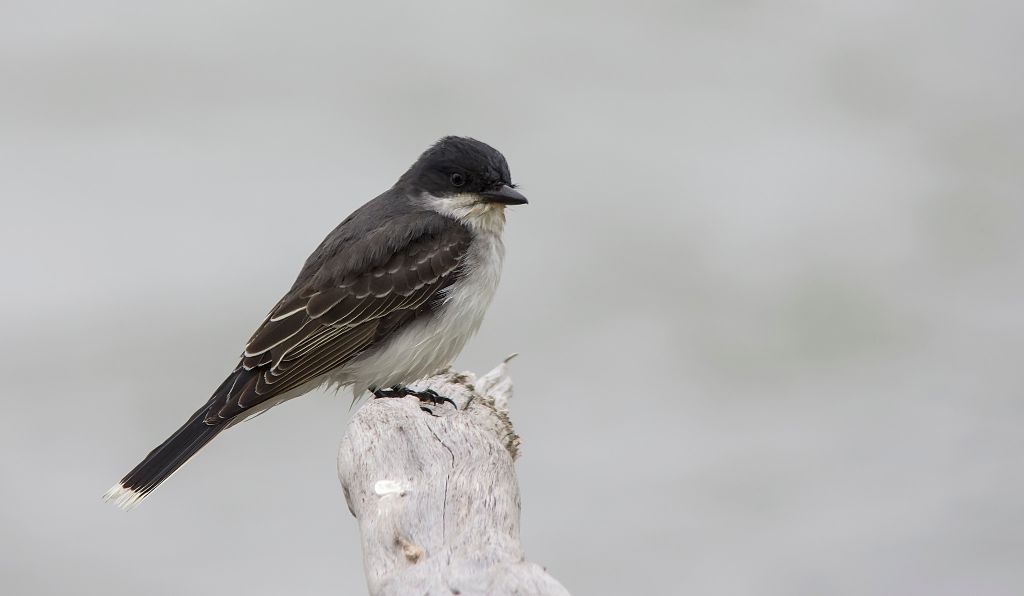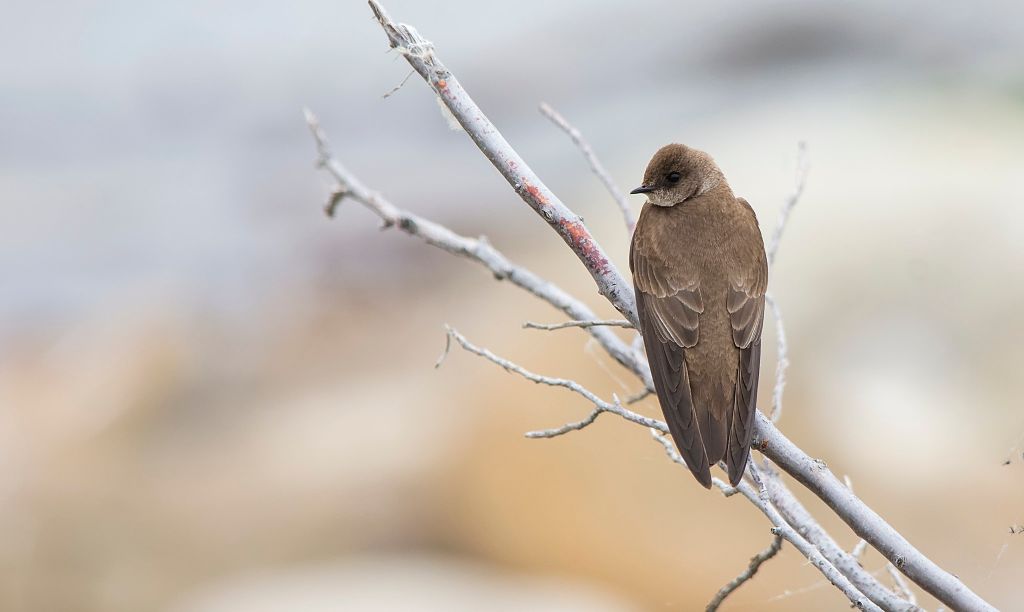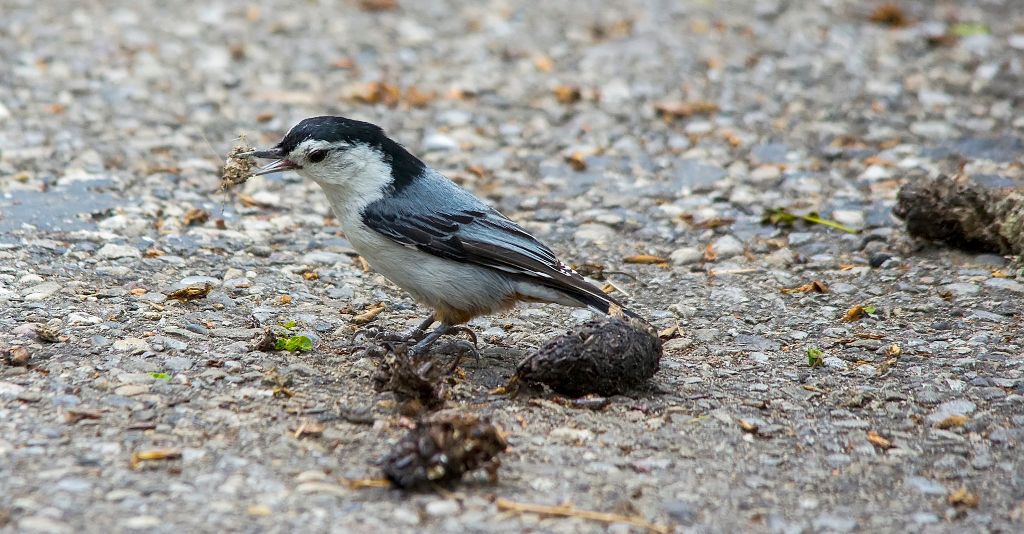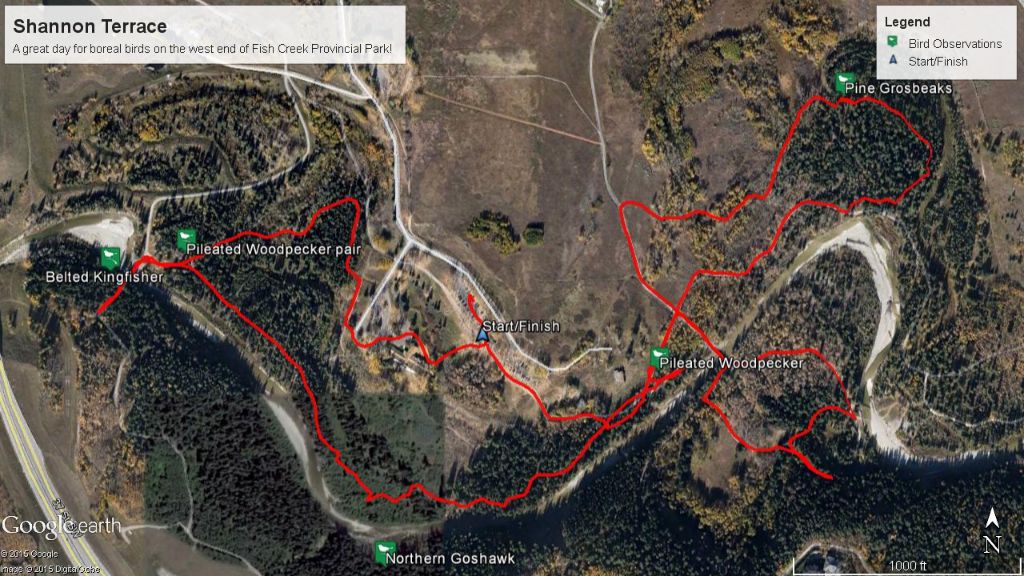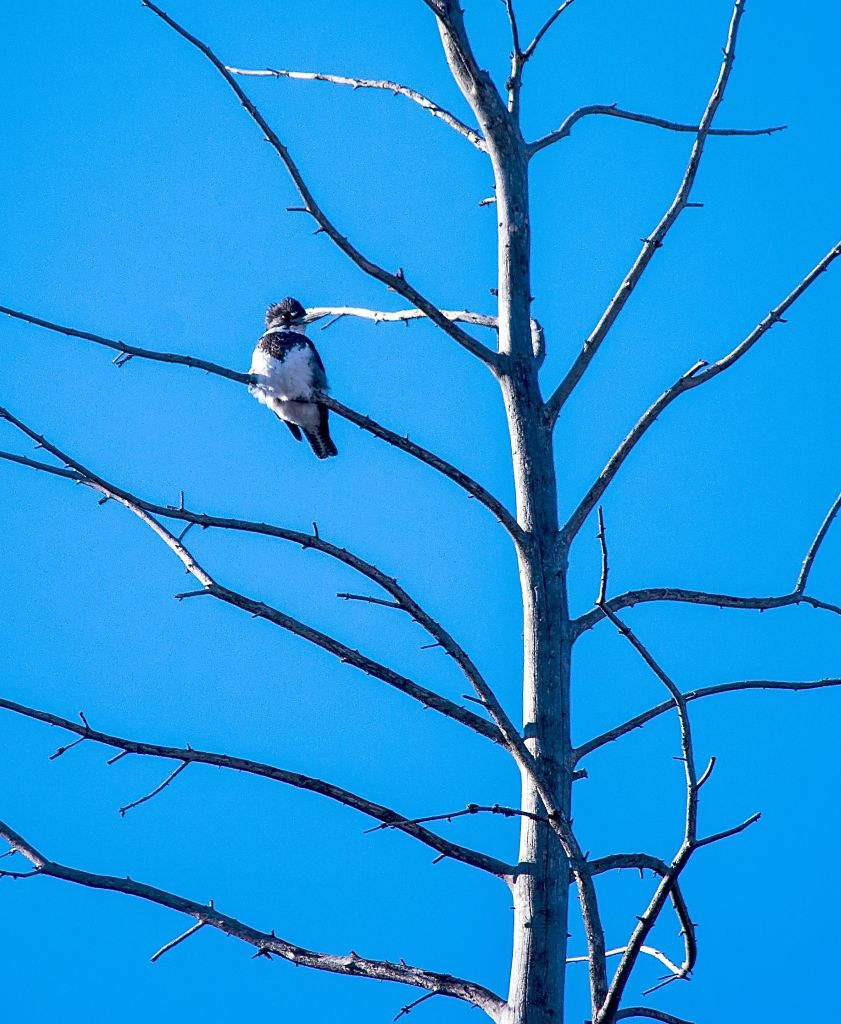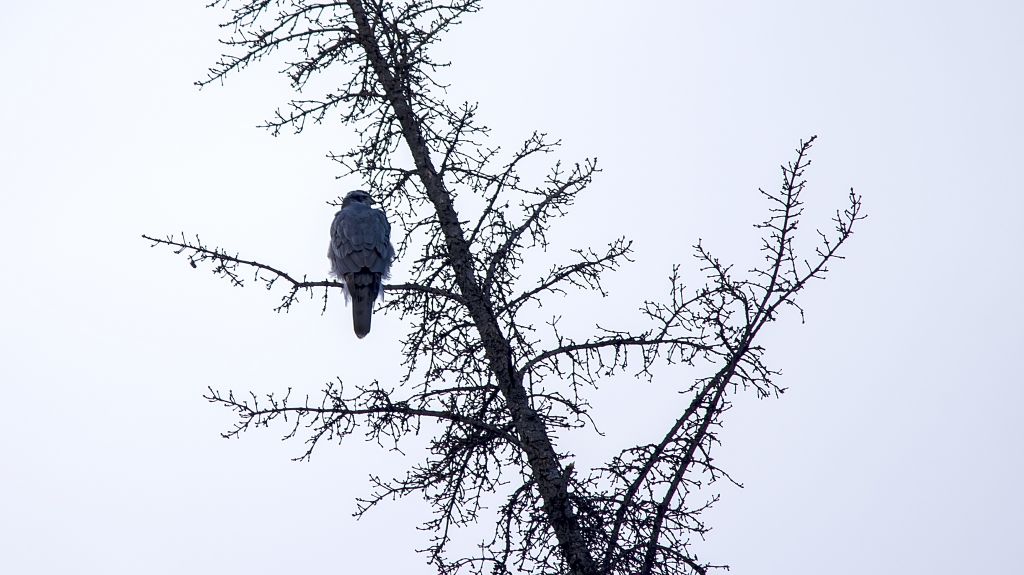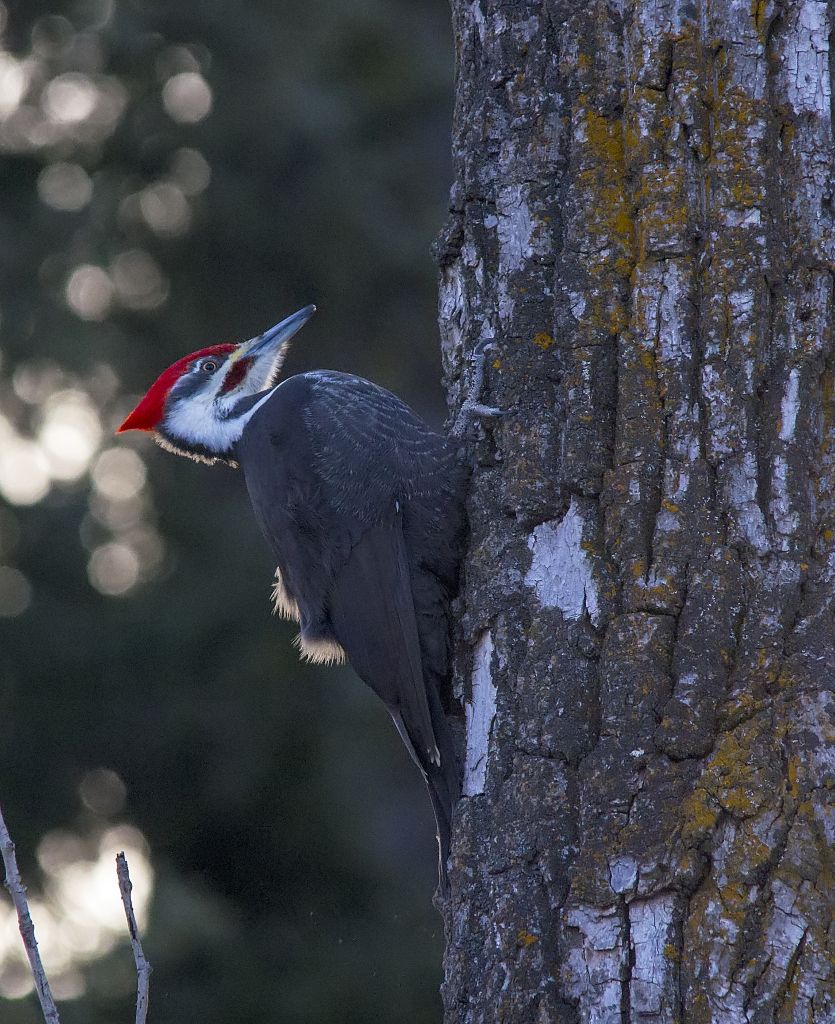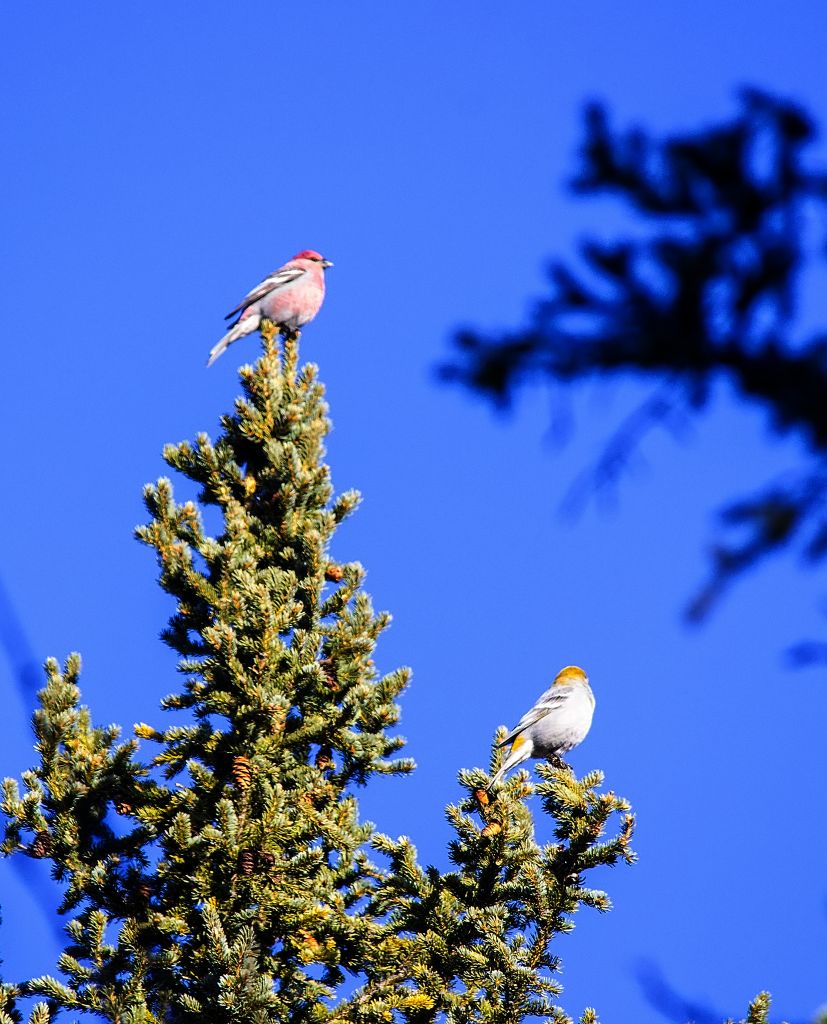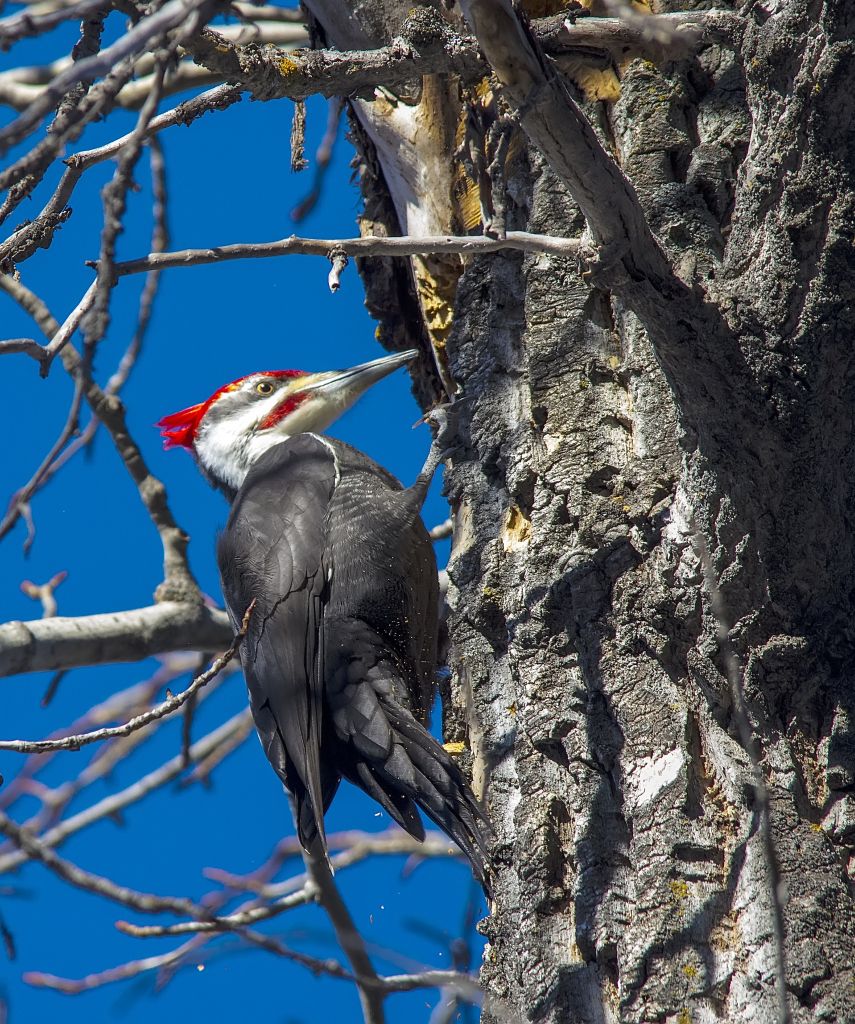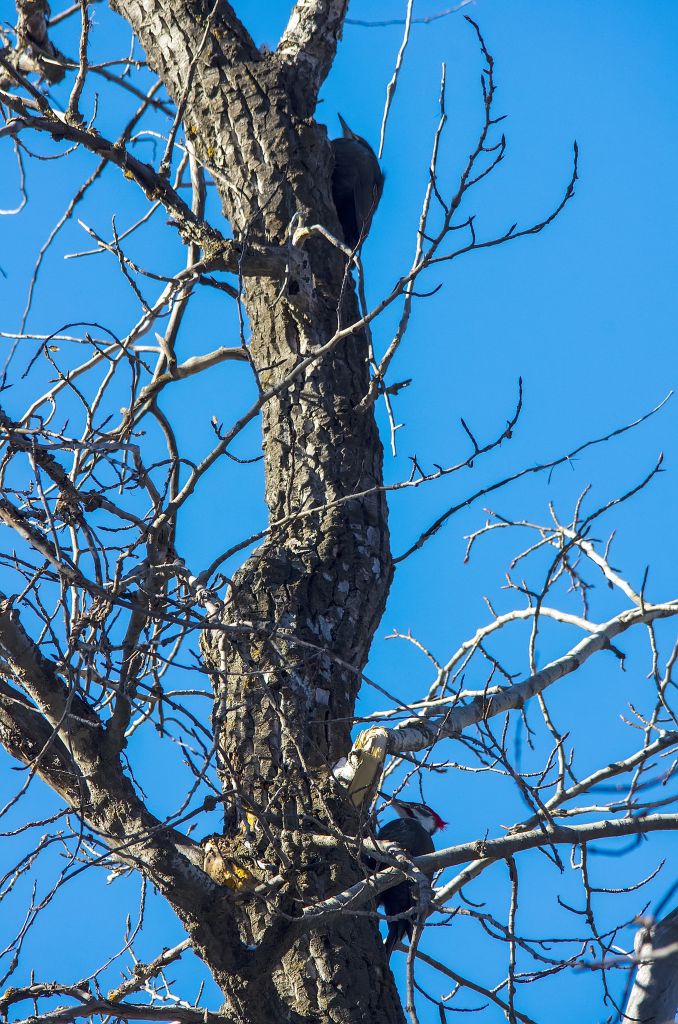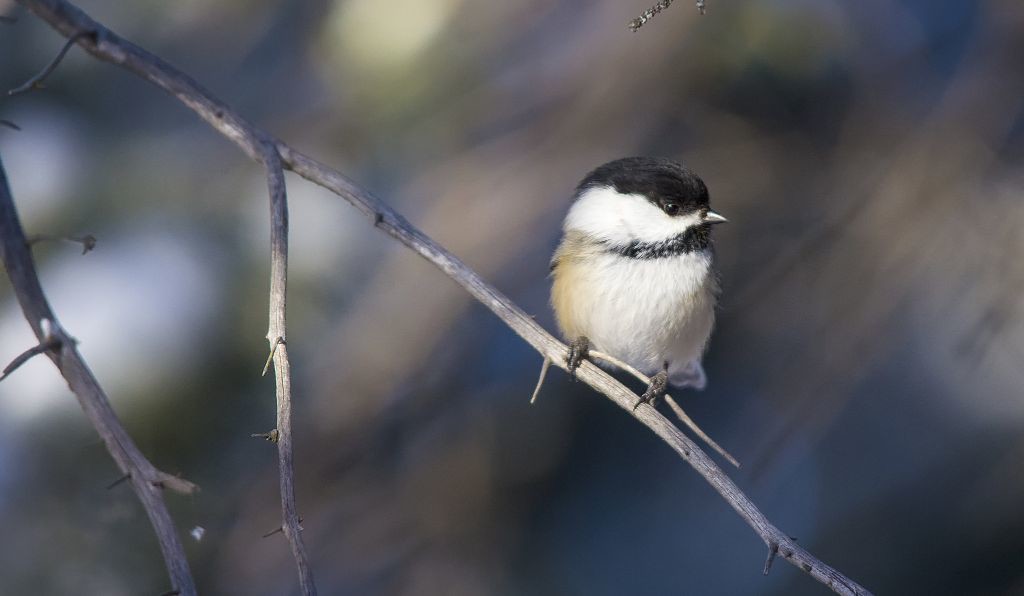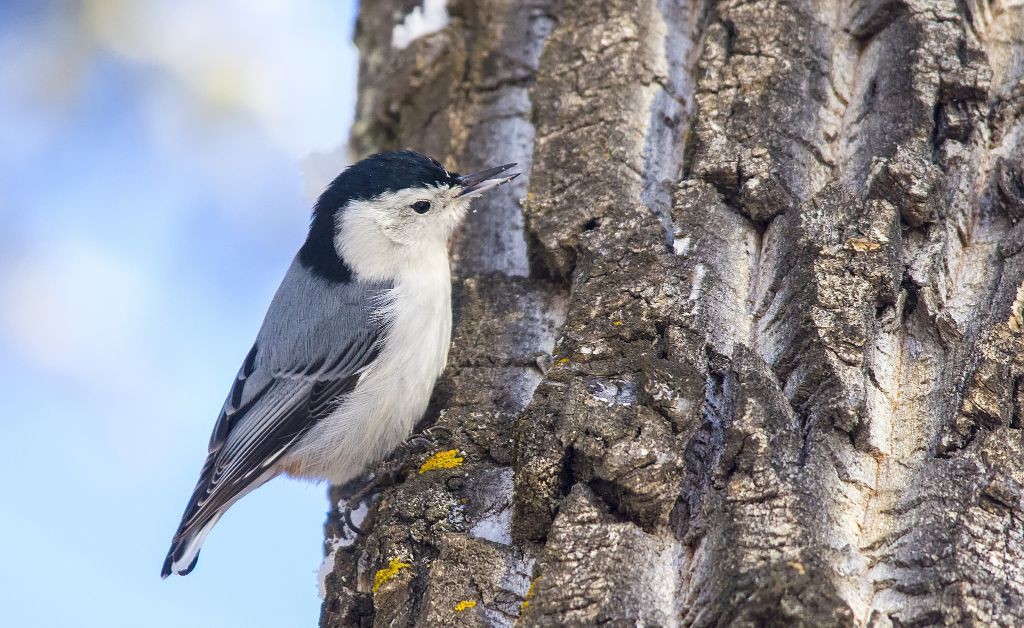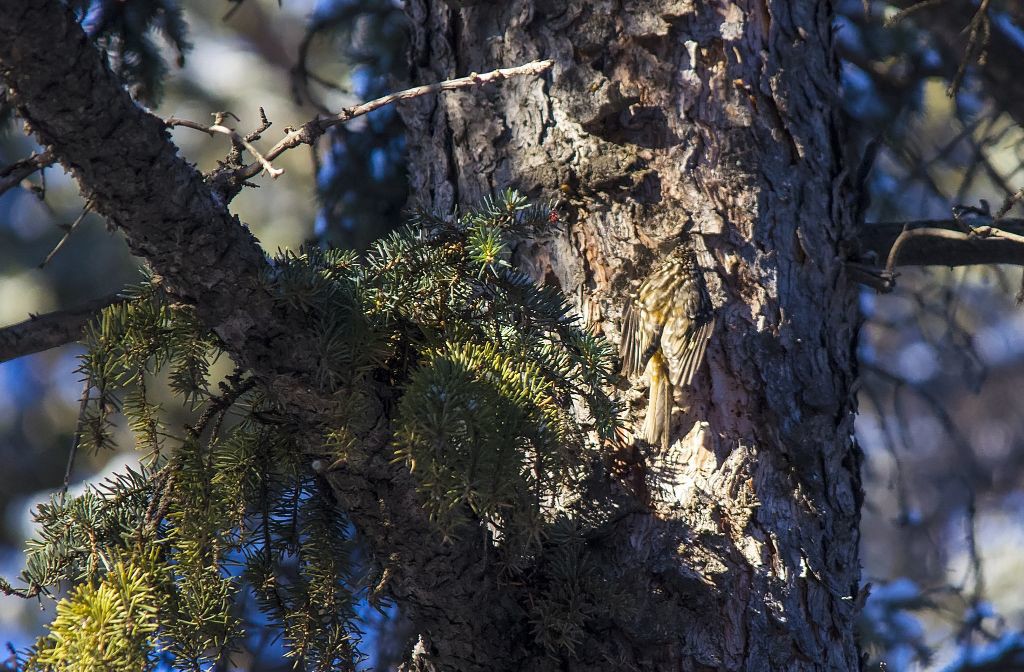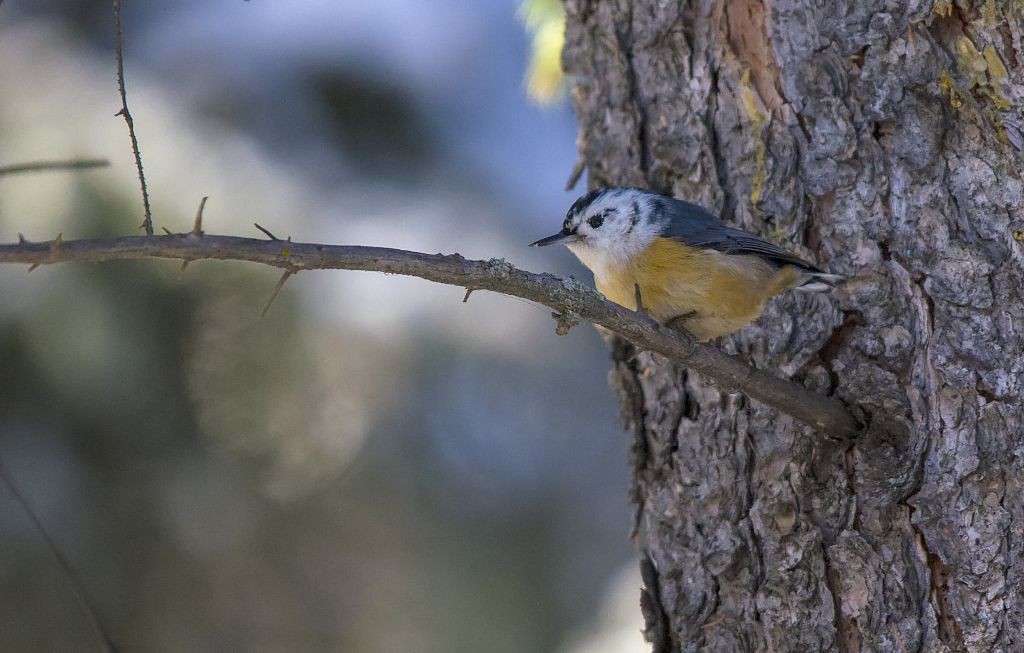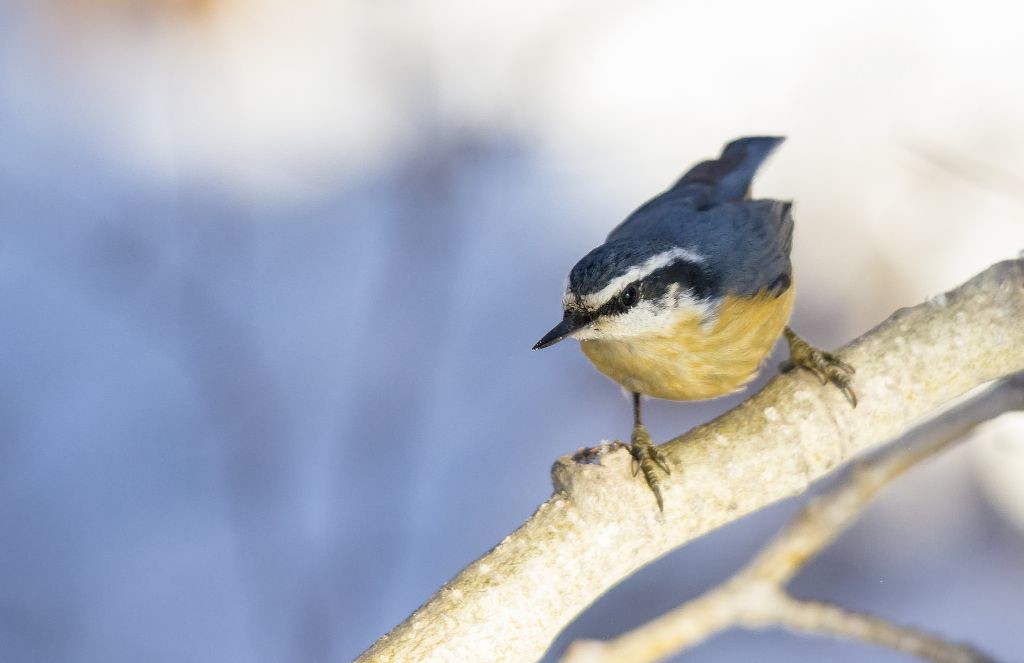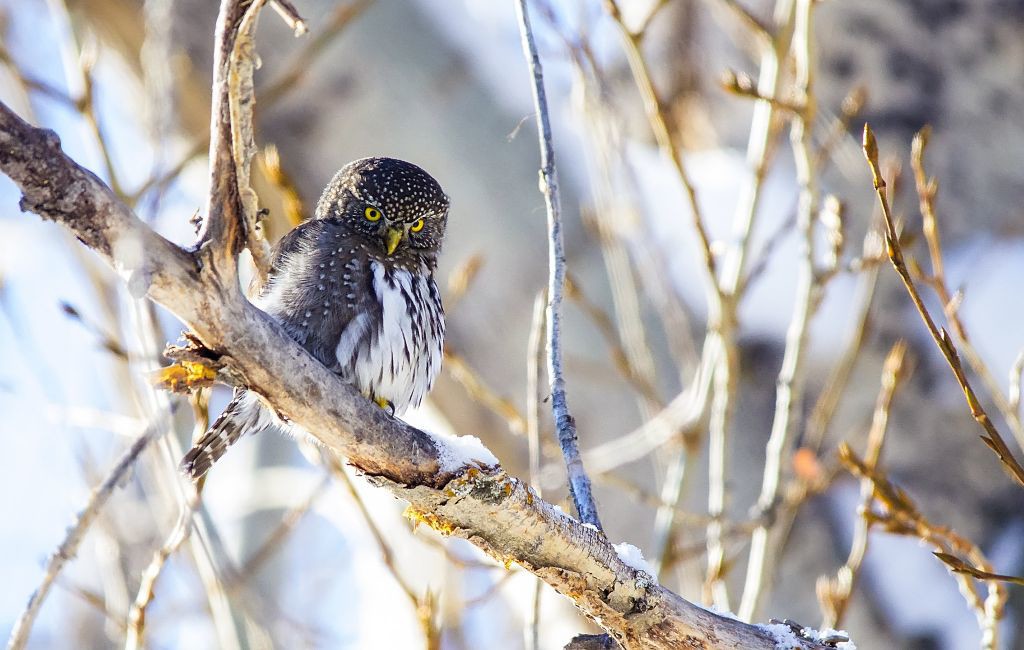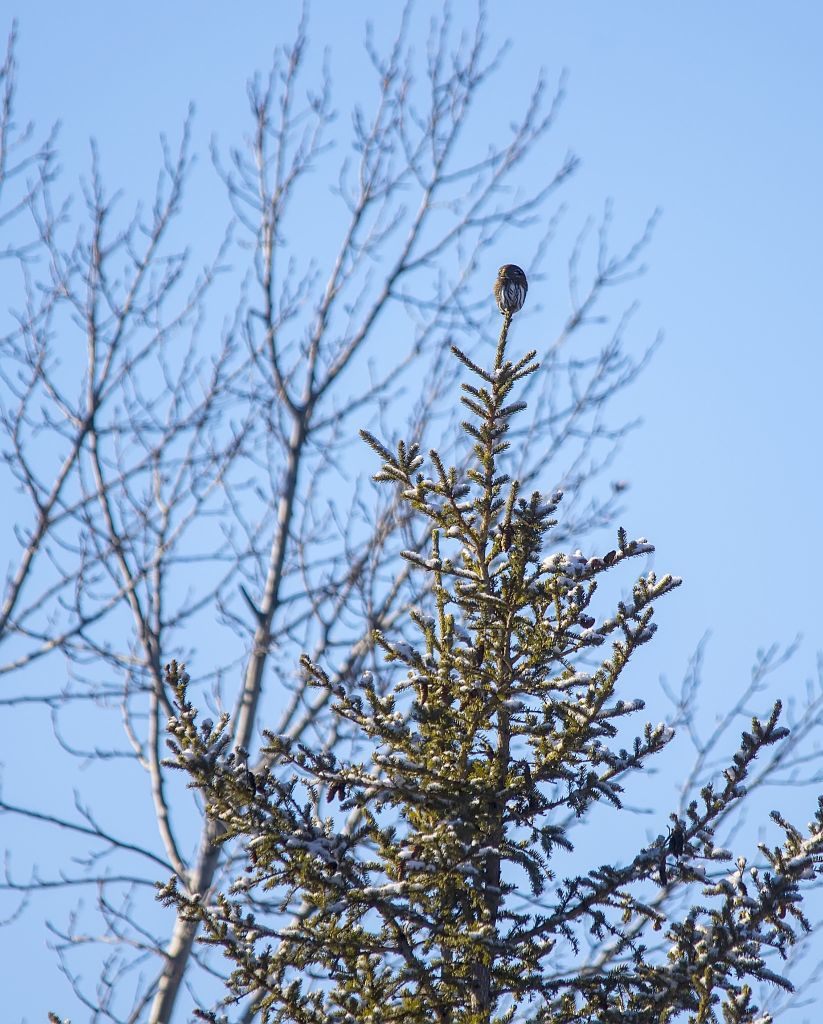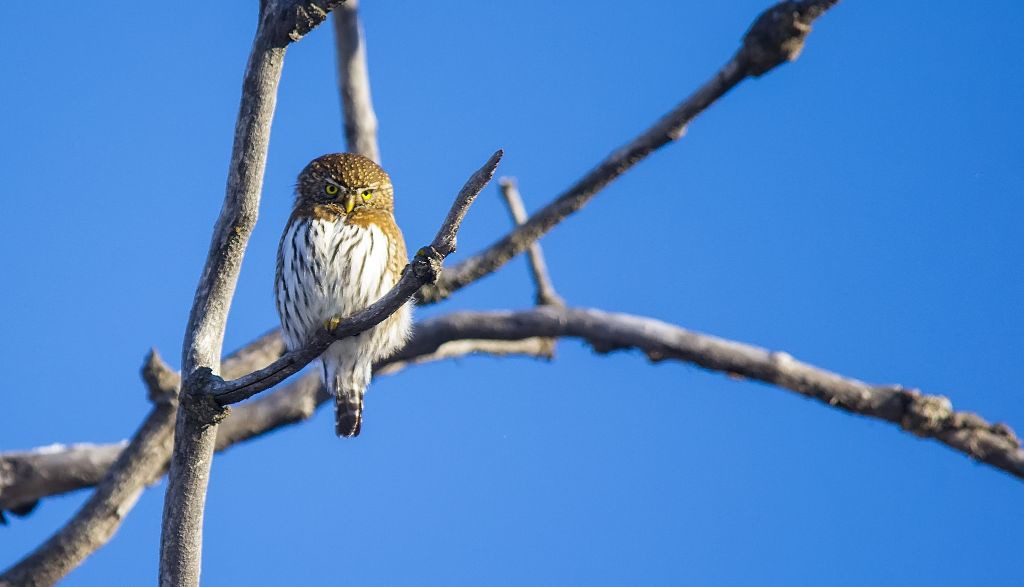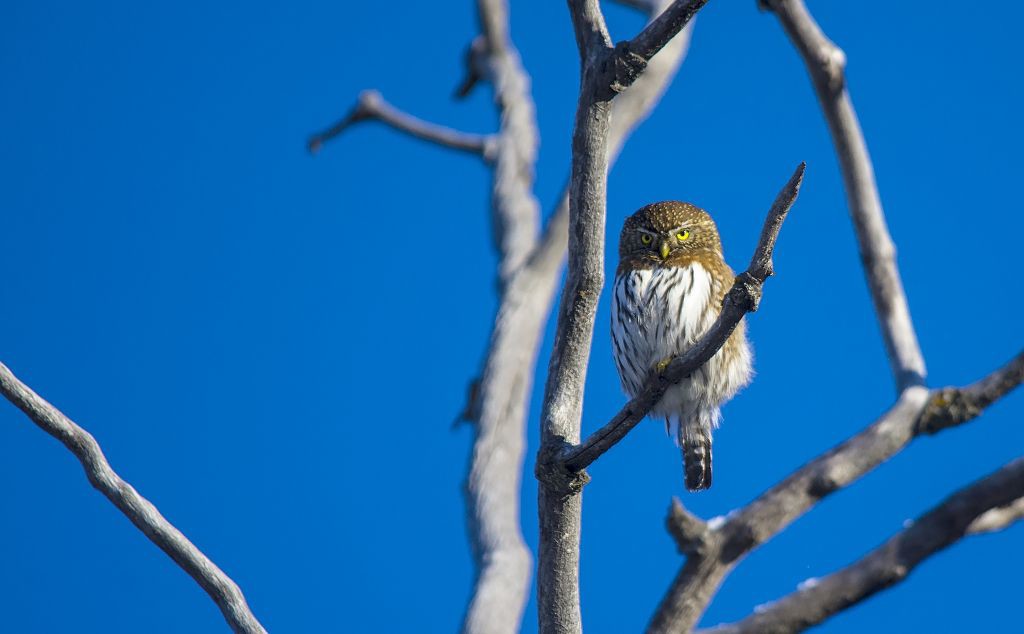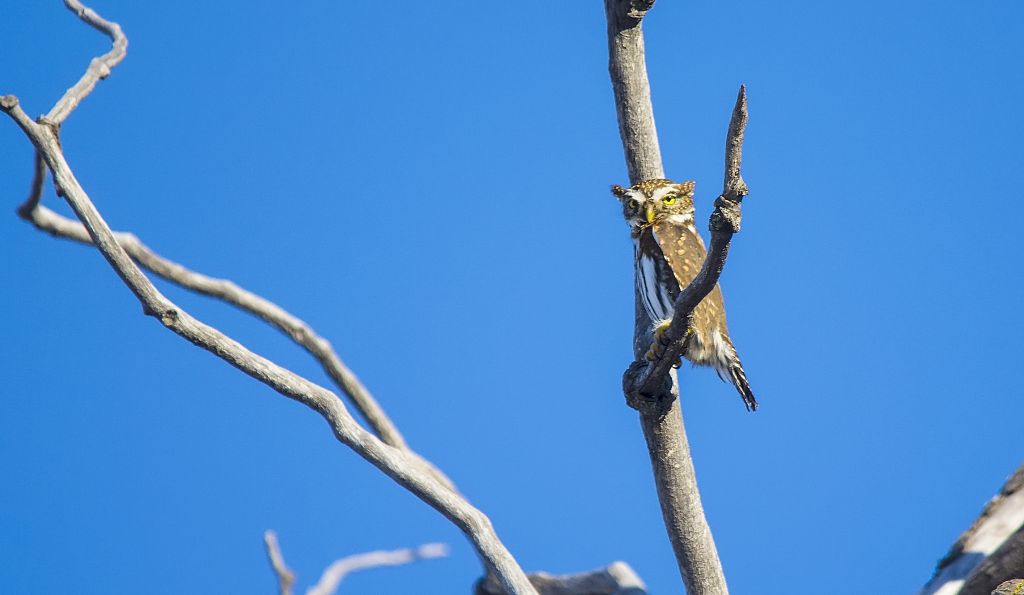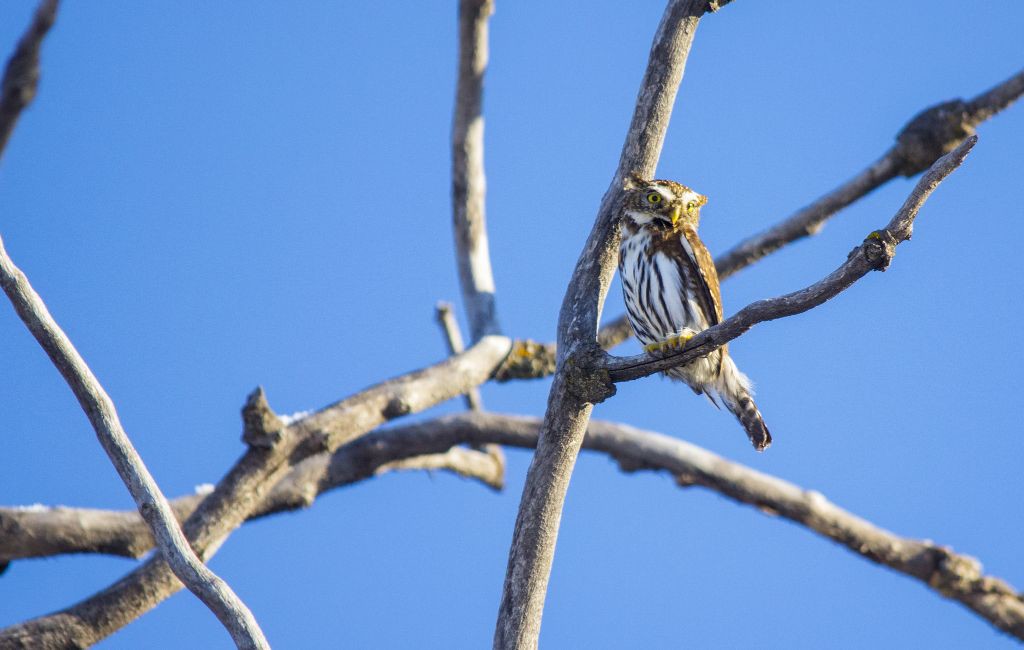Posted by Dan Arndt
Following the first outing to search for the continuing rare birds at Carburn Park, we headed to Bebo Grove in search of a possible return of the Northern Pygmy-owl from last winter, or maybe a Barred Owl, or a little less charismatic, but nonetheless interesting American Three-toed Woodpeckers. While we didn’t find any of those three species, we did find a few more elusive birds in some of the best upland boreal habitat you can find in the city of Calgary.
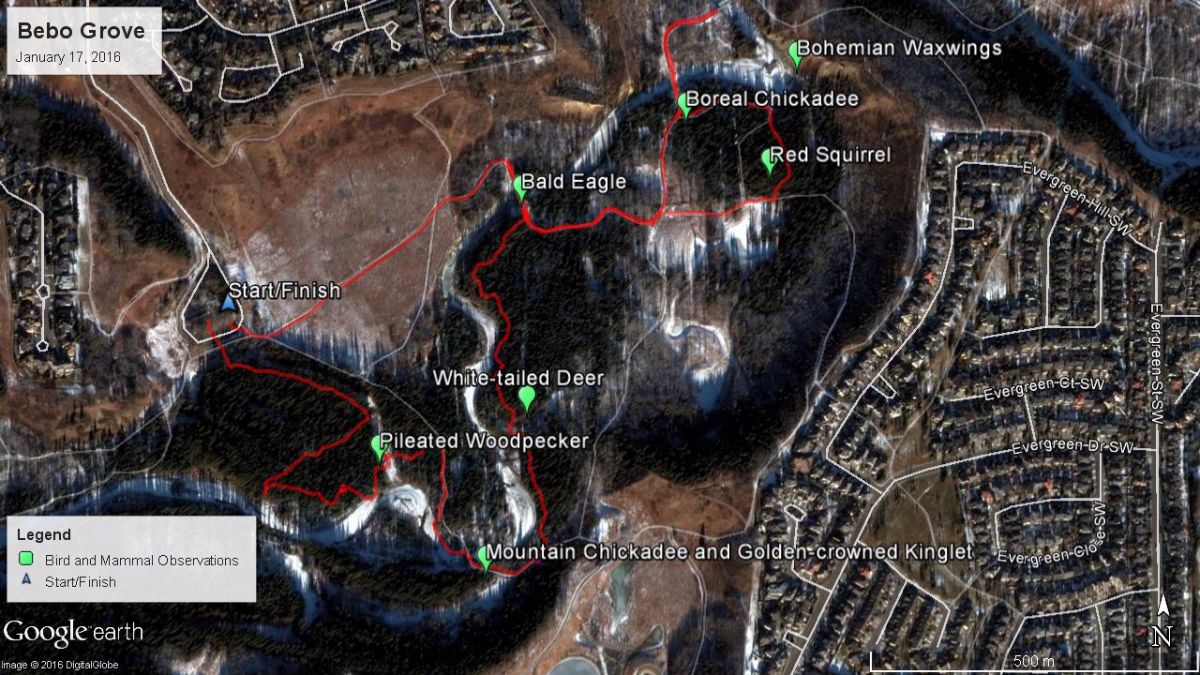
Bebo Grove, January 17, 2016
Our morning got off to a relatively slow start, as our search for Bob, the leucistic Red-breasted Nuthatch turned up empty, as did our search through the picnic area for either American Three-toed or Black-backed Woodpeckers.
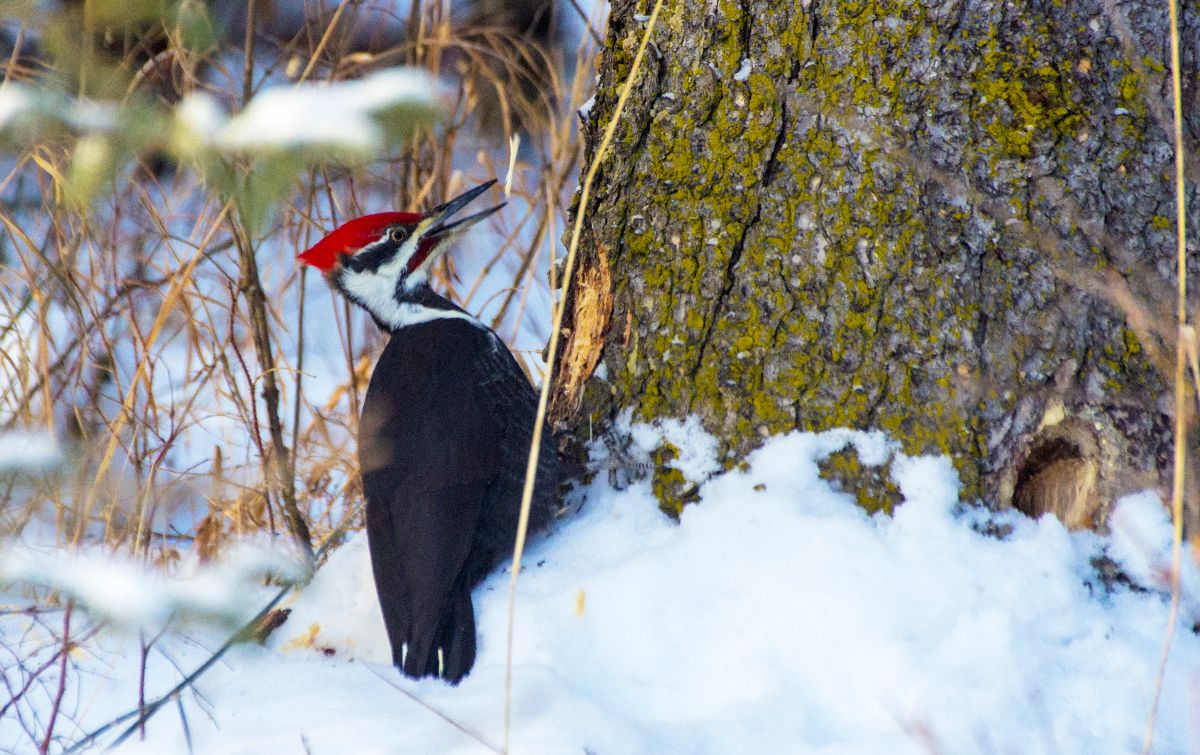
male Pileated Woodpecker
[exif id=”15264″]
Even a trip to the edge of Fish Creek itself was quiet and uneventful, until a last minute glimpse of a Pileated Woodpecker got our attention. We worked our way around the grove until everyone was able to get a good, unobstructed view of the bird, and as we left it there it was still working away on the same tree.
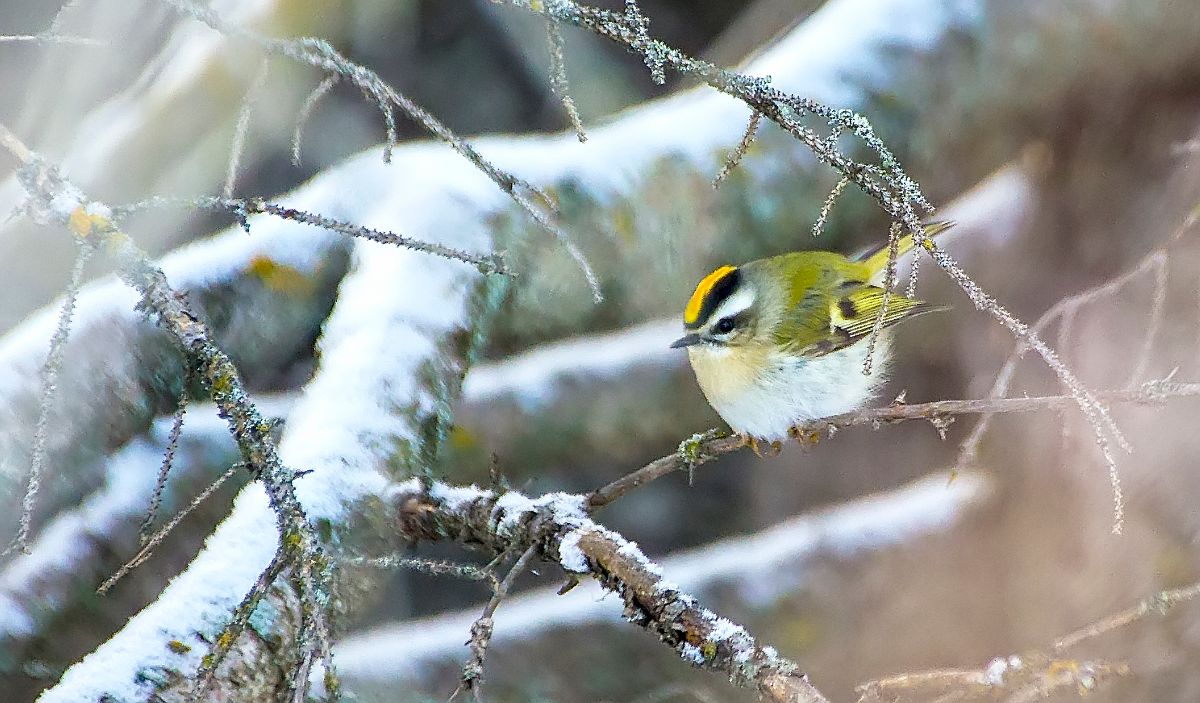
Golden-crowned Kinglet
[exif id=”15267″]
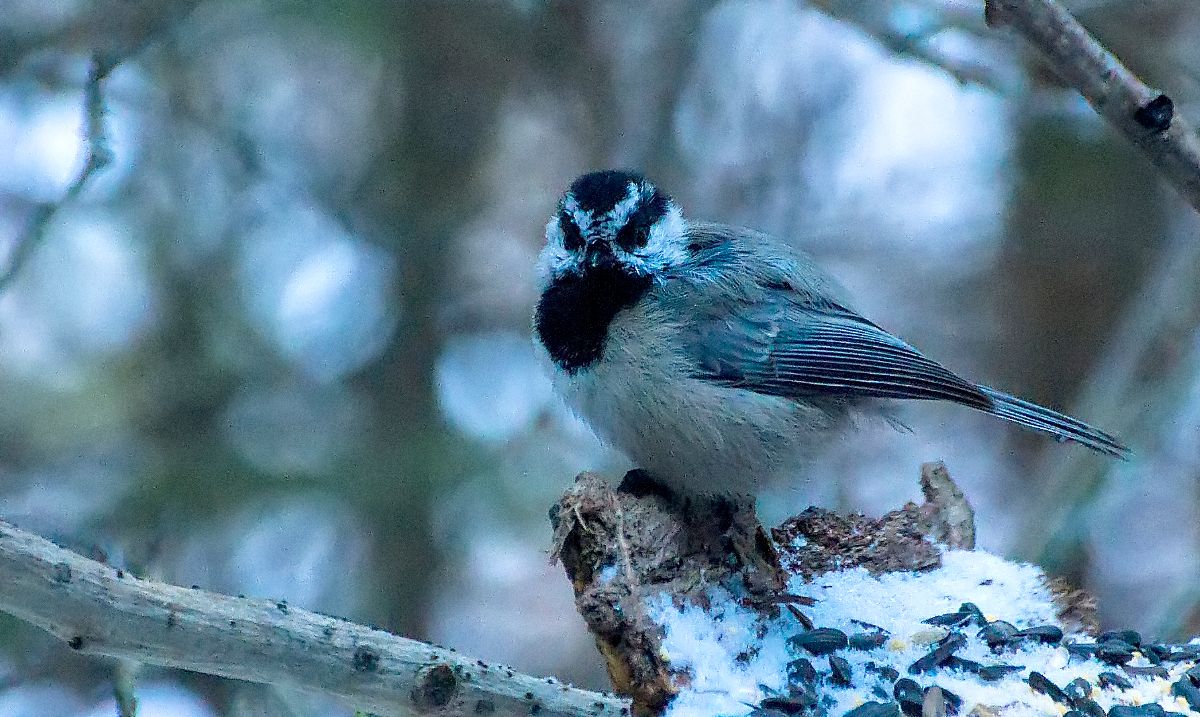
Mountain Chickadee
[exif id=”15265″]
Across the creek we headed to a feeding station where a pair of Mountain Chickadees had been seen throughout the week. One little surprise, and always welcome, were a pair of Golden-crowned Kinglets singing away in the trees. They displayed for a few minutes, and while we were watching and listening, we also heard our first Boreal Chickadee songs from the dense trees.
Around the corner was the Mountain Chickadee location, and this individual looked a little bit rough around the edges. While it was feeding quite vigorously on the provided sunflower seeds, it gave us quite a few good looks out in the open. We may have seen a second individual there, but never two at the same time, so none of us had any certainty about there being two birds.
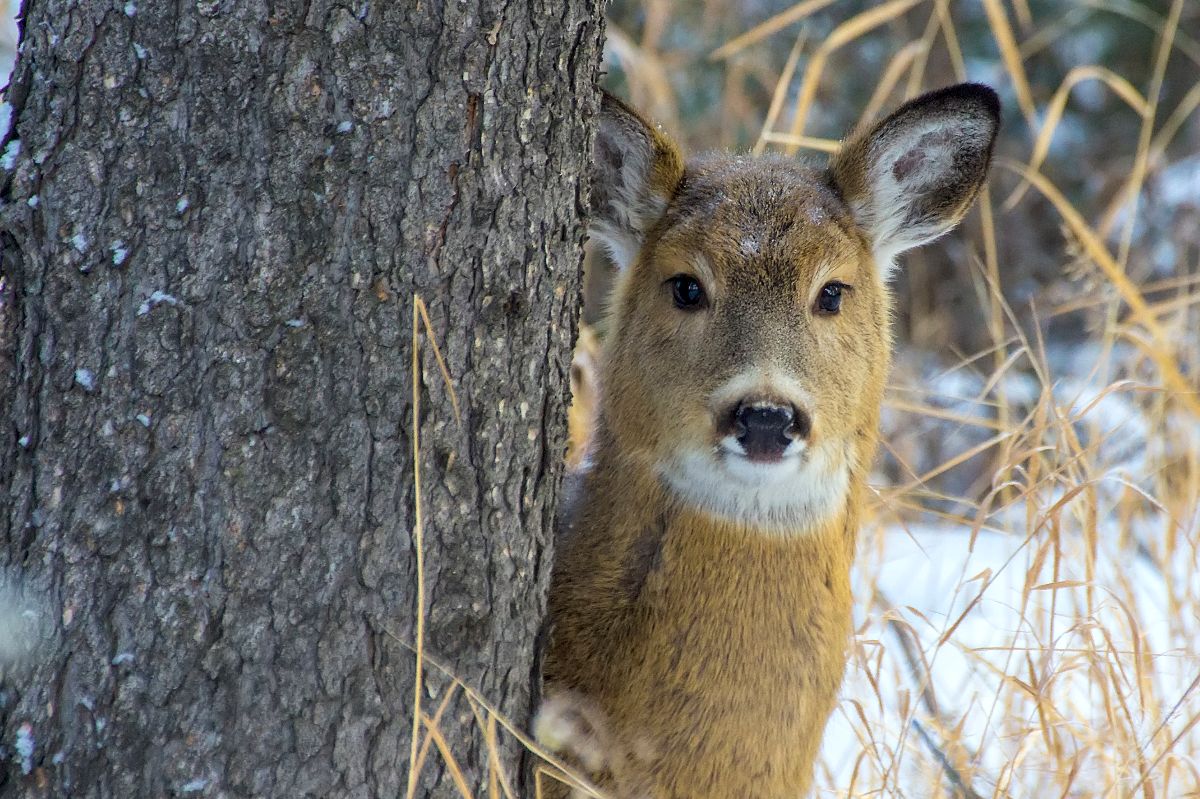
White-tailed Deer
[exif id=”15268″]
As we followed the creek east and north into the park, we nearly missed a trio of White-tailed Deer resting in the snow less than twenty meters off the path, but wide out in the open. It wasn’t until this young deer stood up and poked its head around the edge of the tree that we noticed it and the two older females nearby. These deer are in good numbers in the park this winter, and all appear to be relatively healthy!
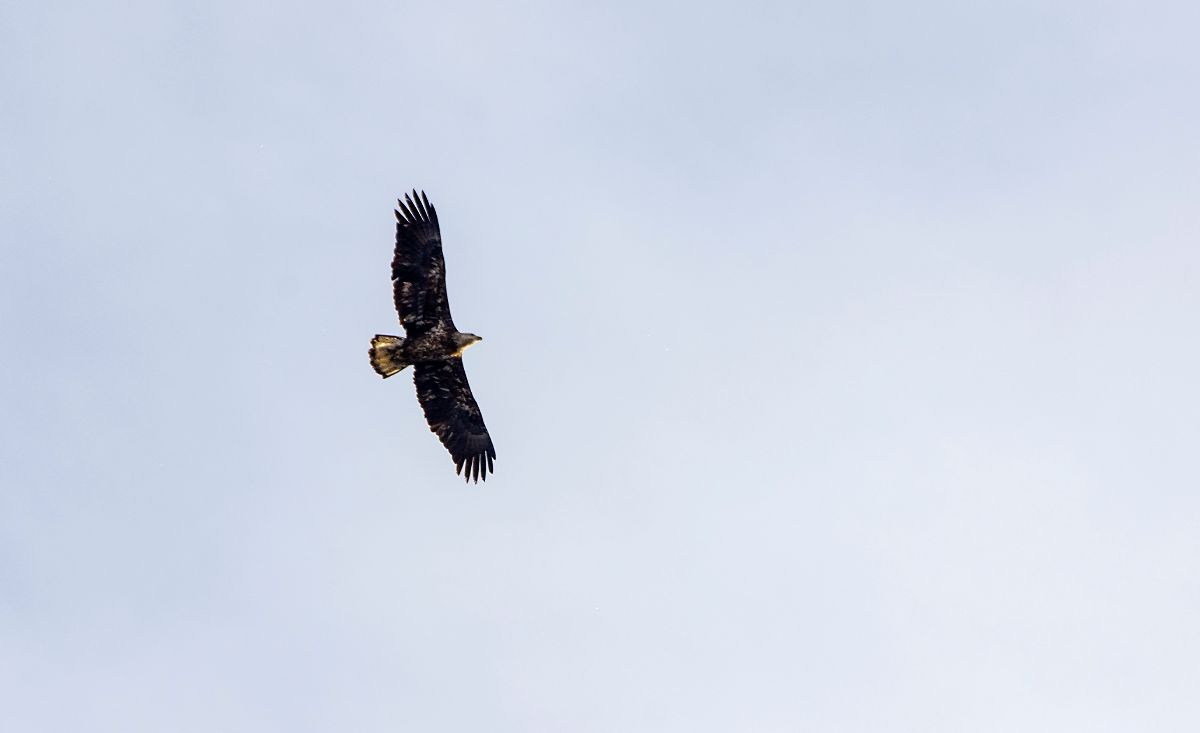
immature Bald Eagle
[exif id=”15266″]
As we crossed Bridge 5 in search of Townsend’s Solitaires, owls, and other birds more common in the more open aspen stands north of the creek, we turned around to spot this young Bald Eagle soaring and circling above us on a thermal. With each circle it gained in elevation quite significantly, until it eventually reached its predetermined cruising altitude and it took off to the south.
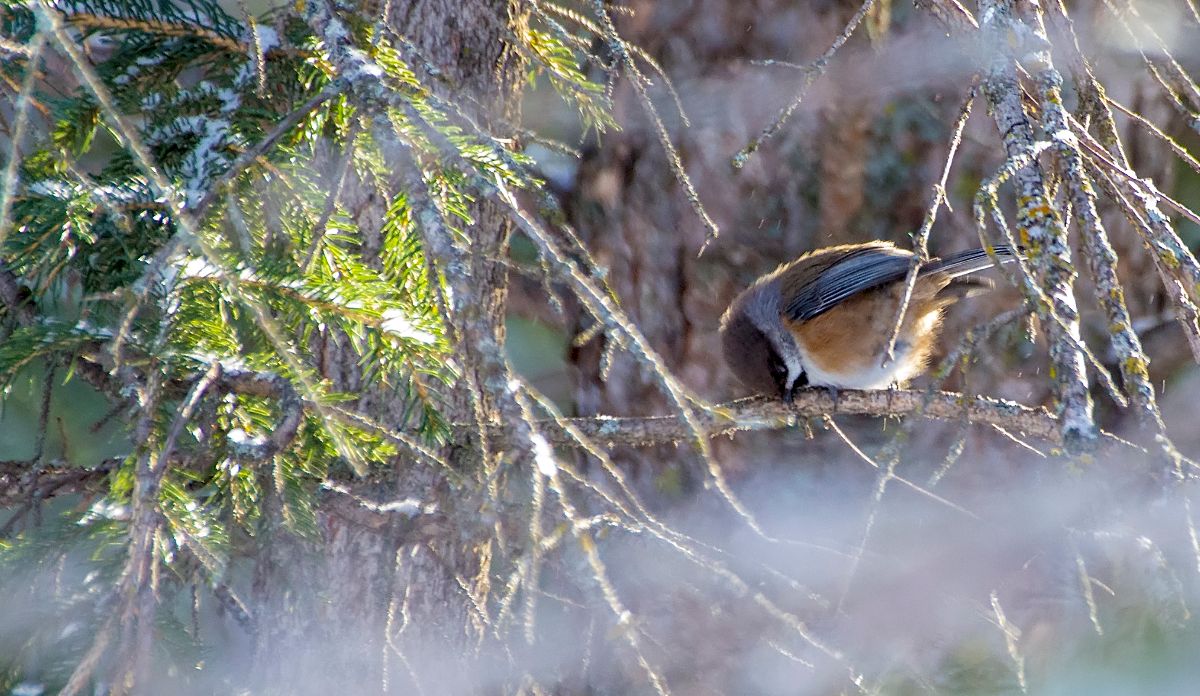
Boreal Chickadee
[exif id=”15269″]
As we rounded out our morning in a particularly dense stand of spruce, we stopped at a particular feeding station which had been home to a rare overwintering Lincoln’s Sparrow, but try as we might, and wait as long as we did, it didn’t turn up for us to this location. We did have a good number of Black-capped Chickadees, and even had a few Boreal Chickadees turn up for a few minutes as the sun came out to greet them.
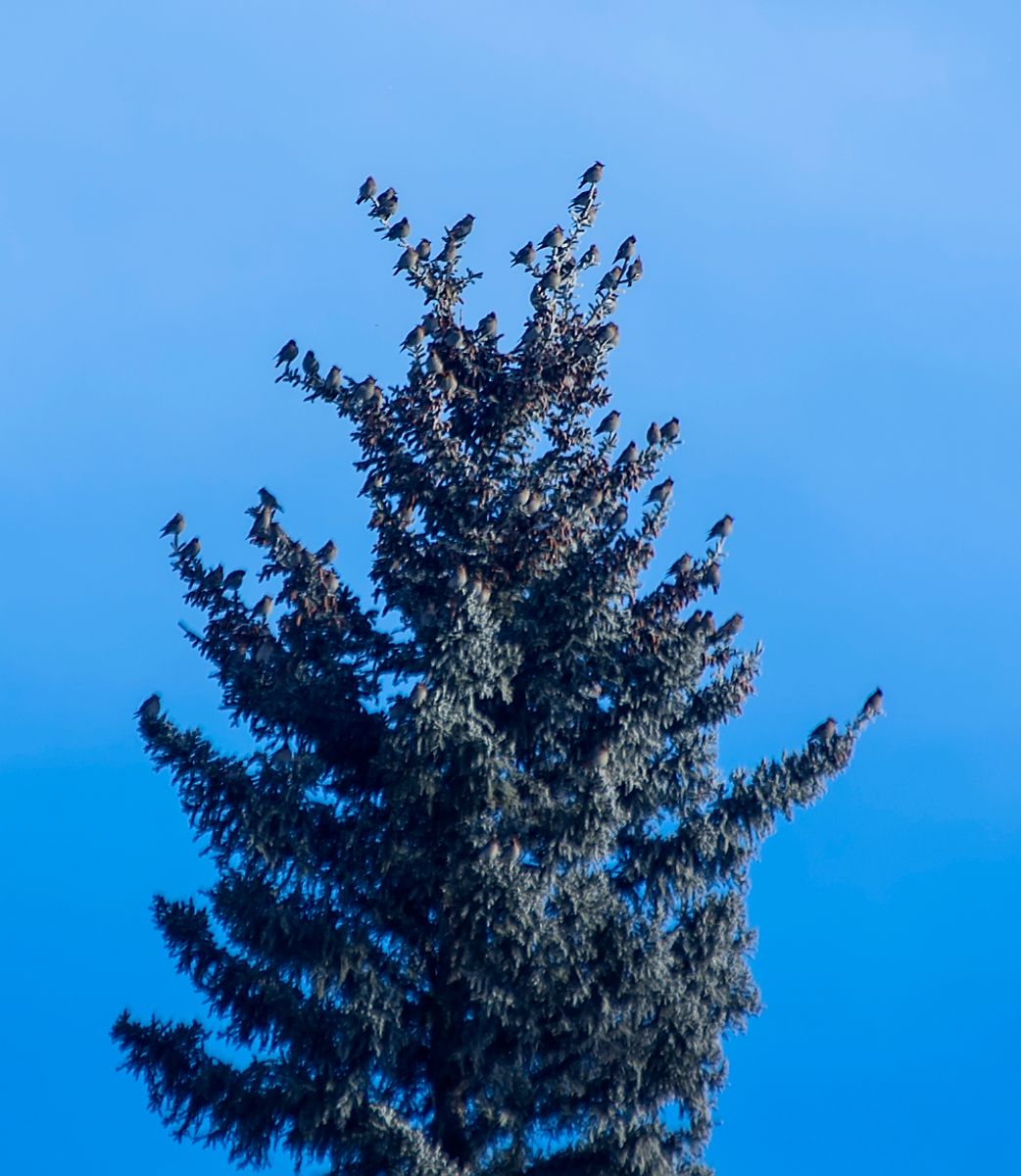
Bohemian Waxwings
[exif id=”15270″]
A little later on we stopped to listen as a flock of birds suddenly appeared above the tree-line and perched across the creek from us. A large group of Bohemian Waxwings, our first of the day, perched in the sun high on the side opposite us.
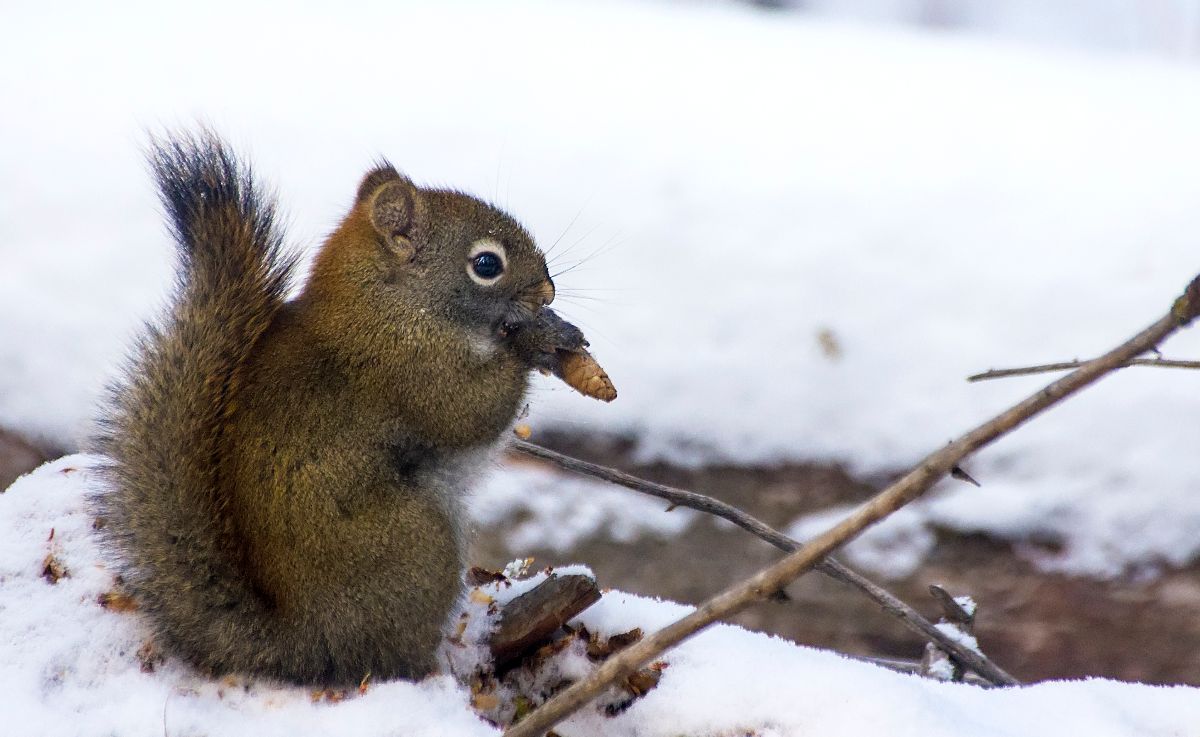
Red Squirrel
[exif id=”15263″]
Our last few minutes before we headed back to the parking lot to end the day was a search for some more American Three-toed or Black-backed Woodpeckers, and while we had some evidence of fairly recent activity, the best we came up with was this little Red Squirrel chowing down on some spruce cones.
